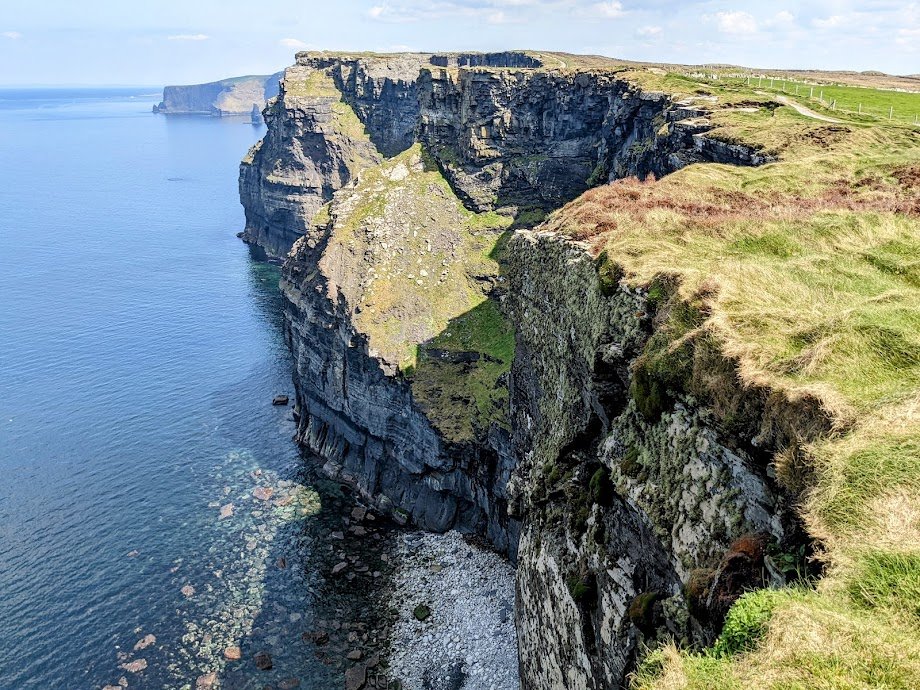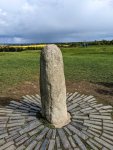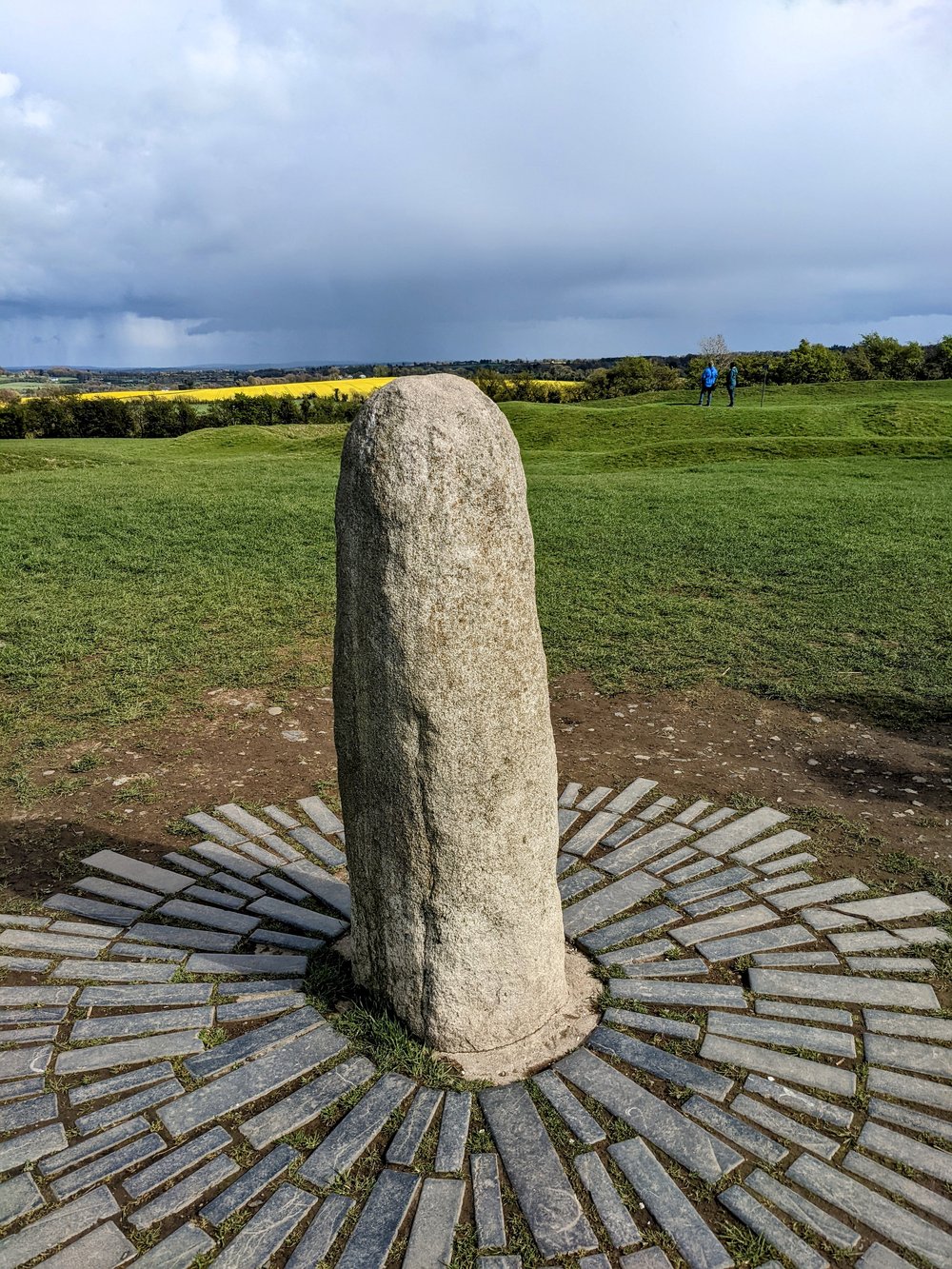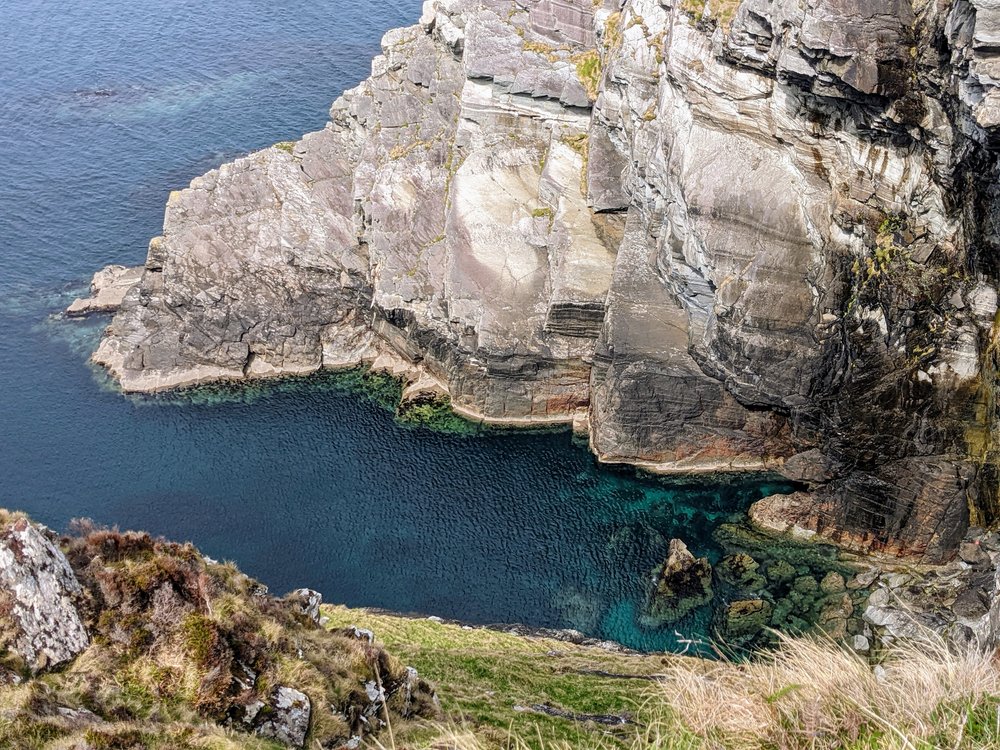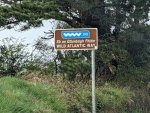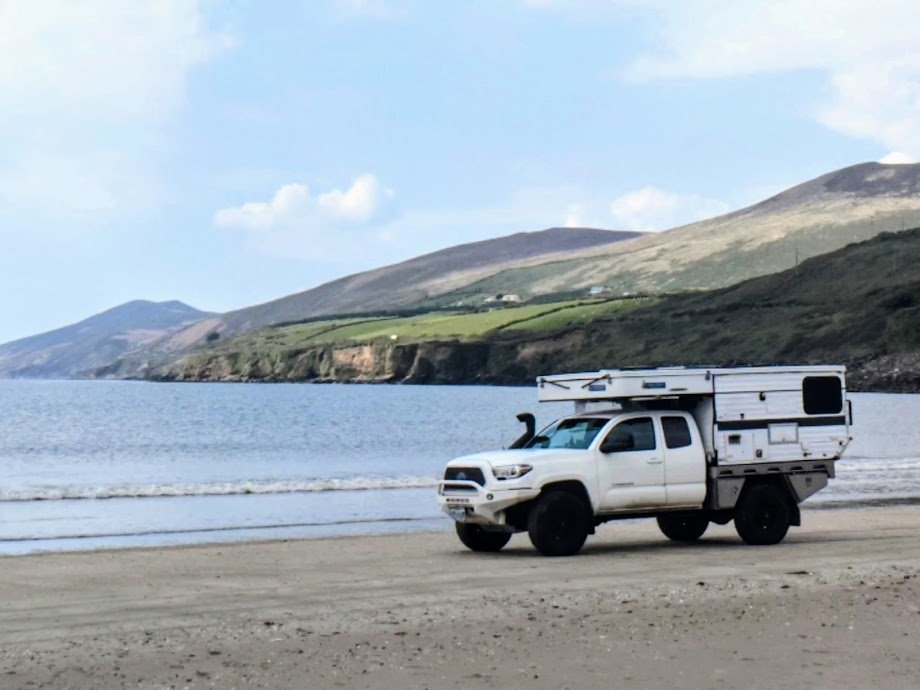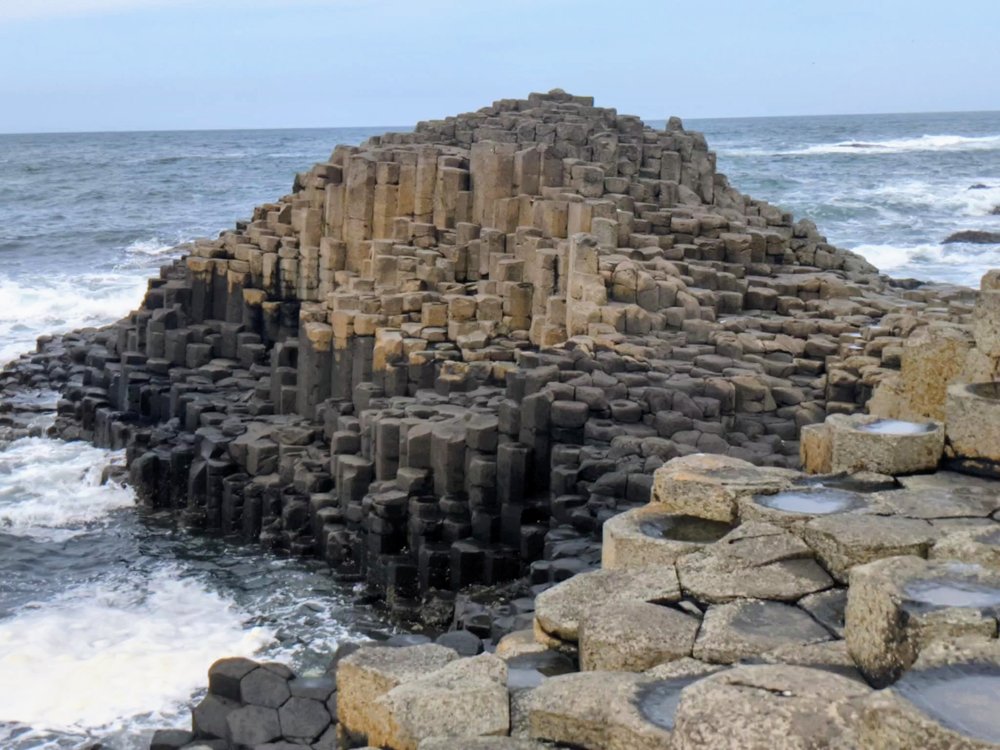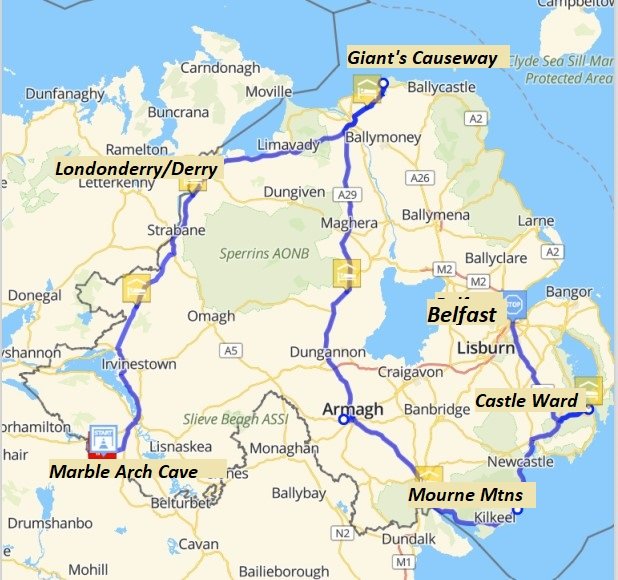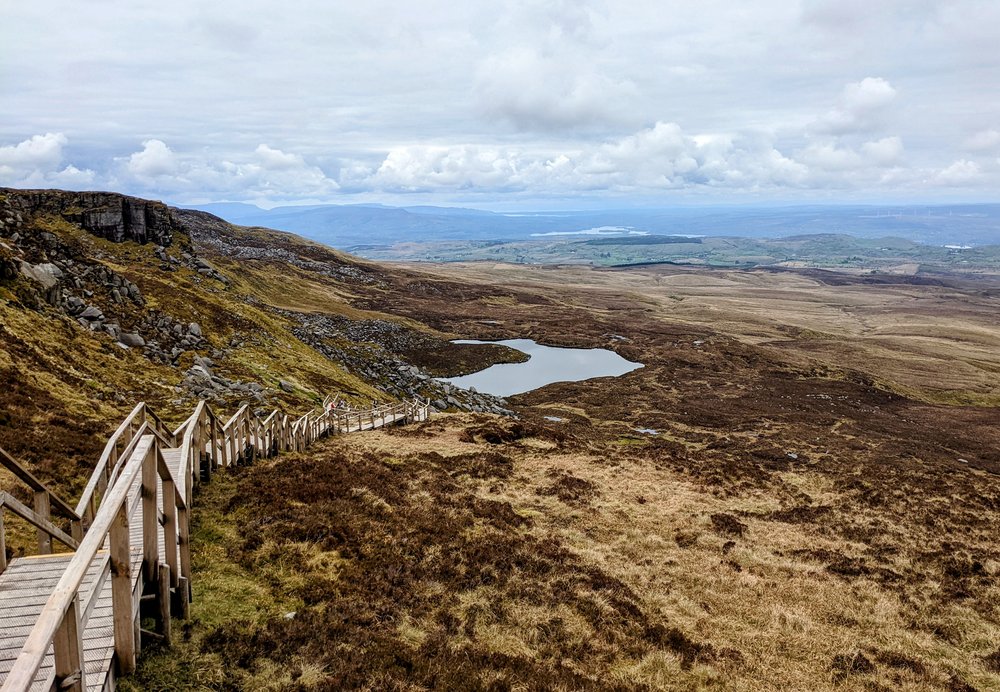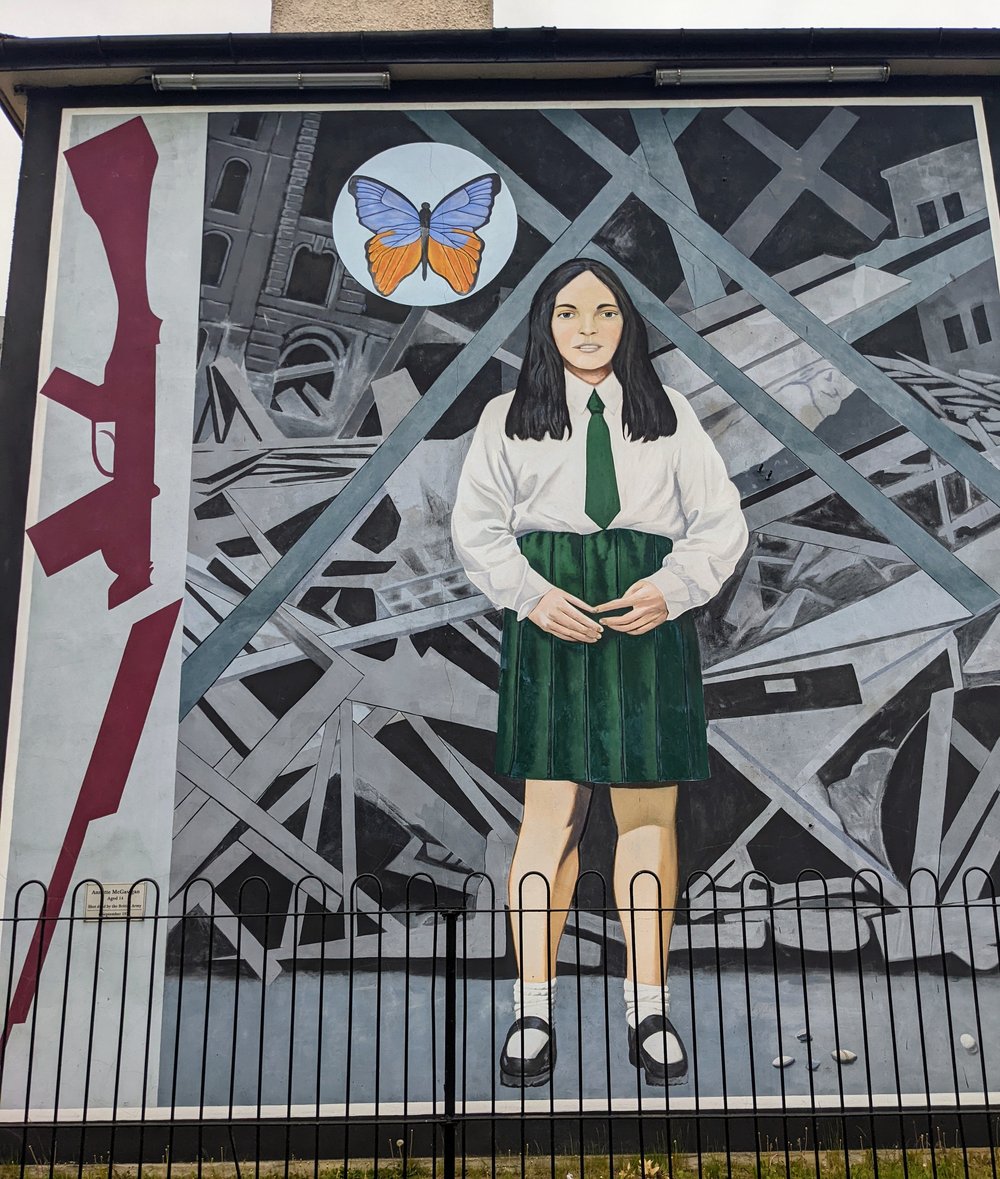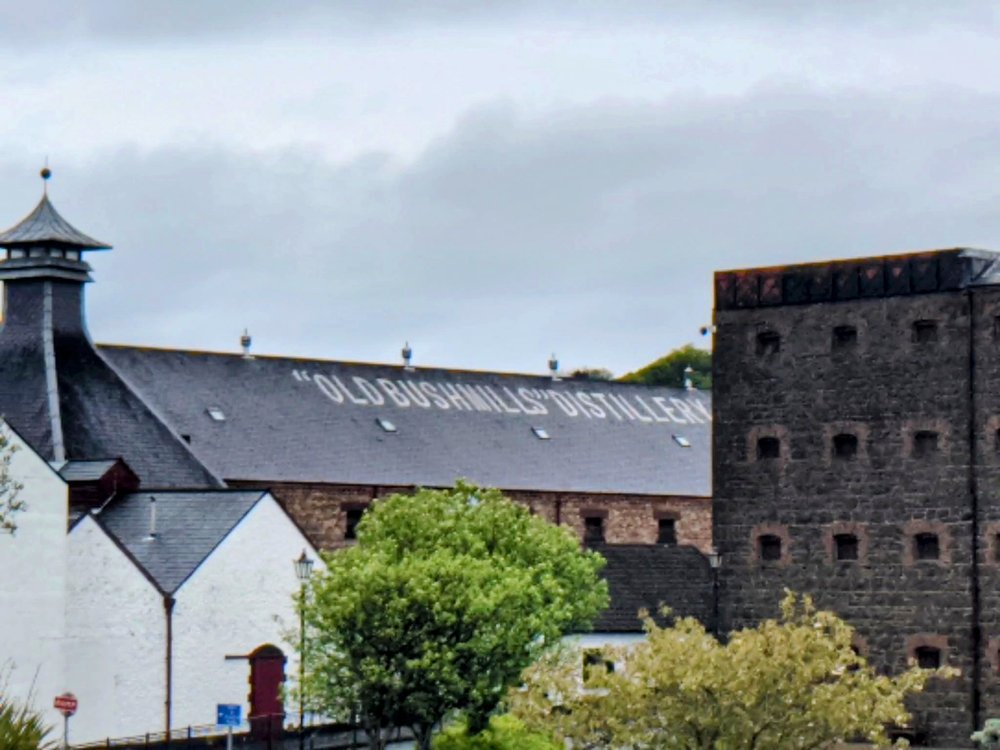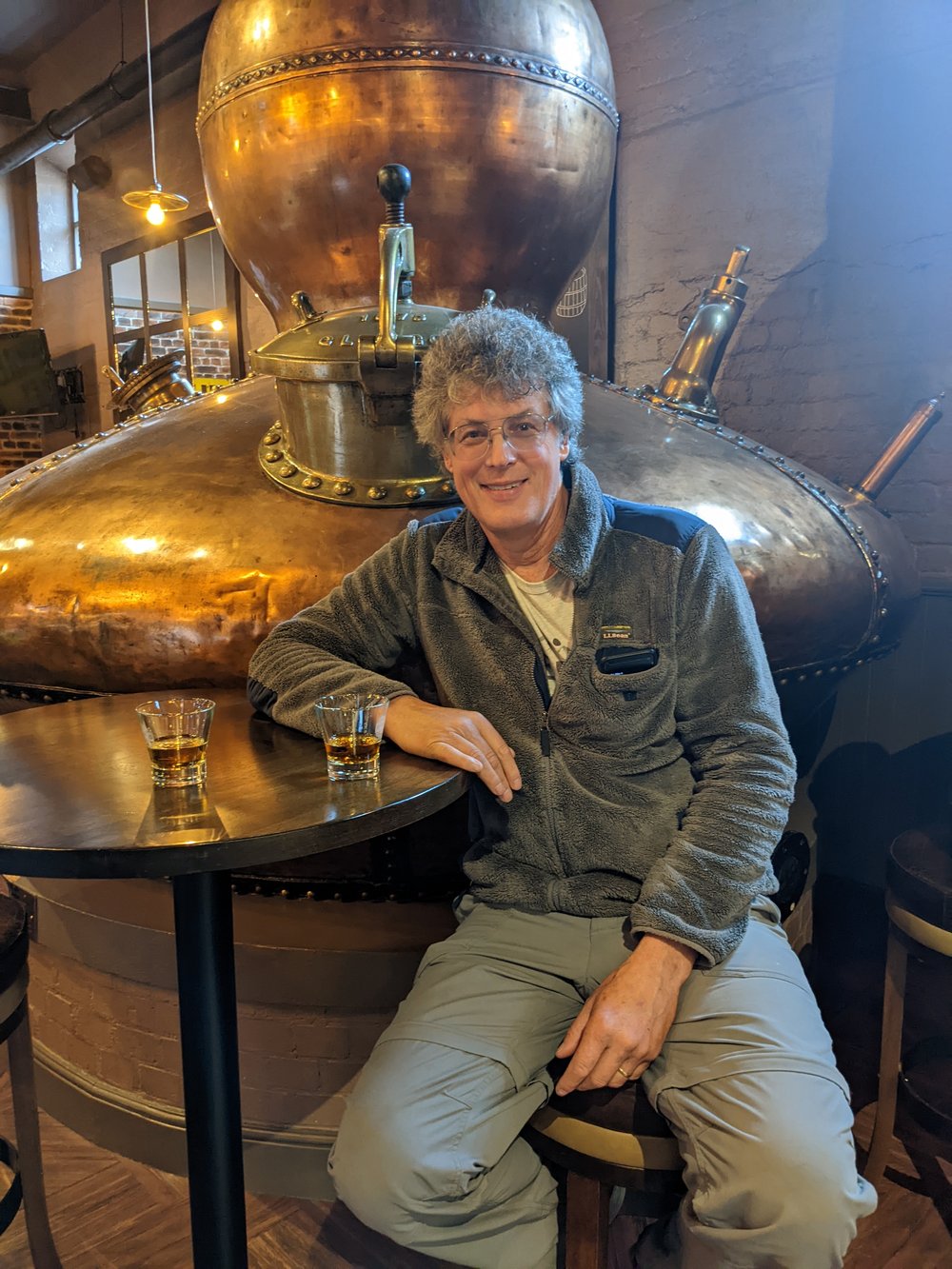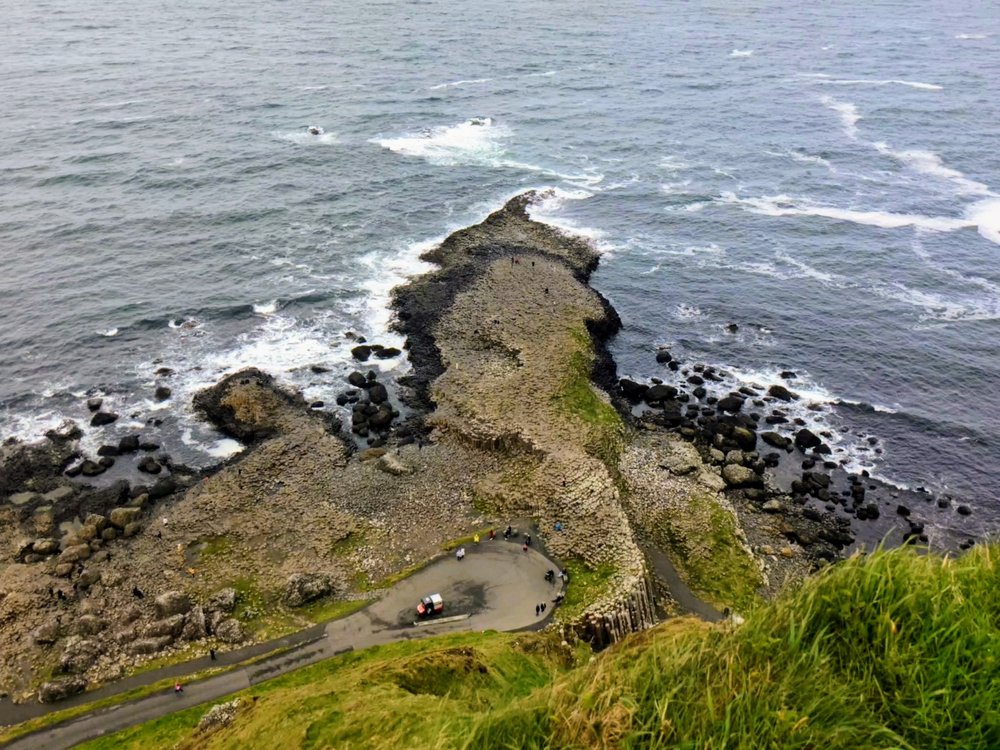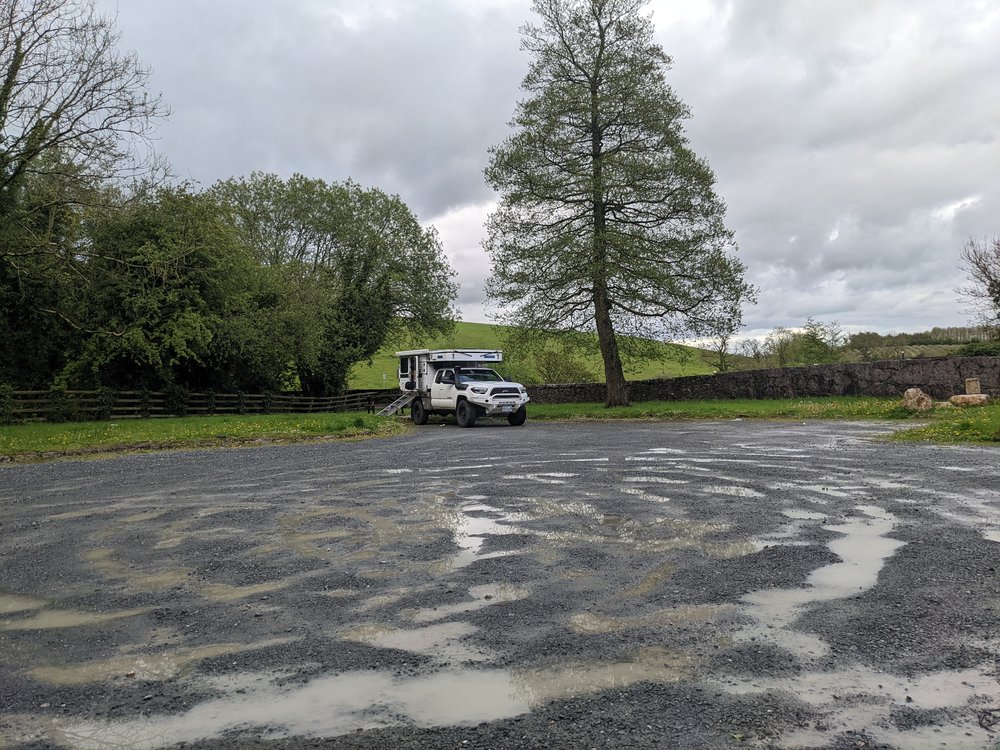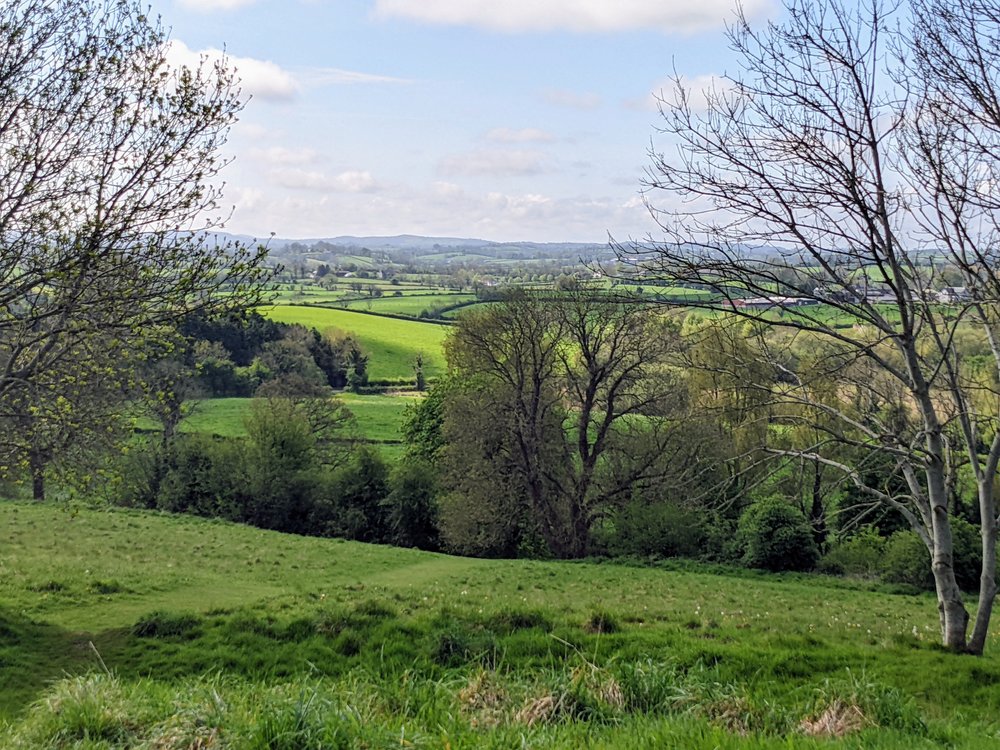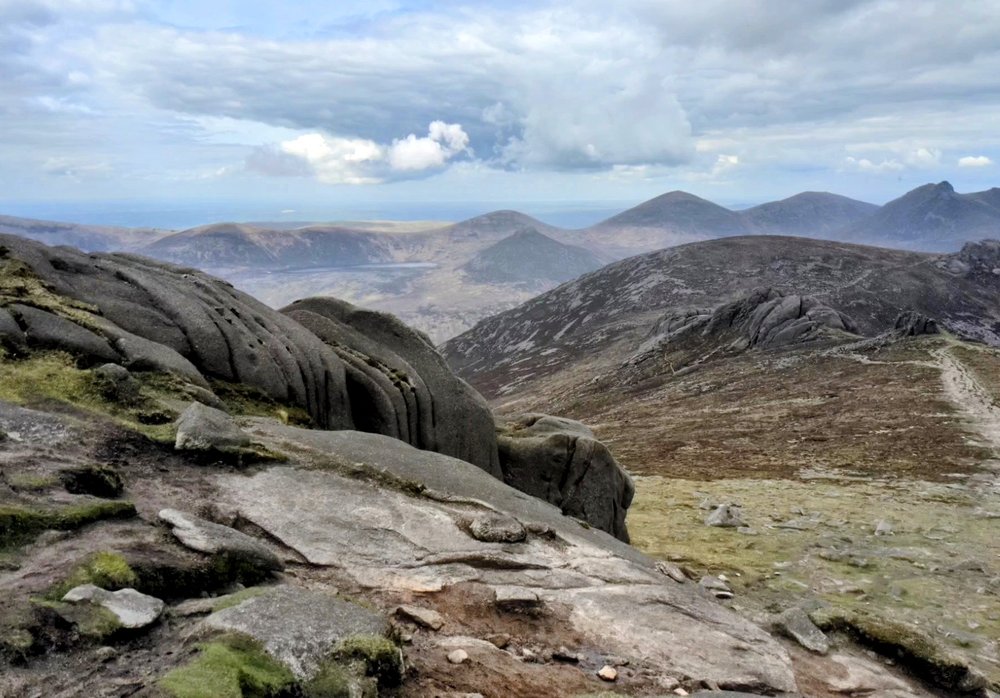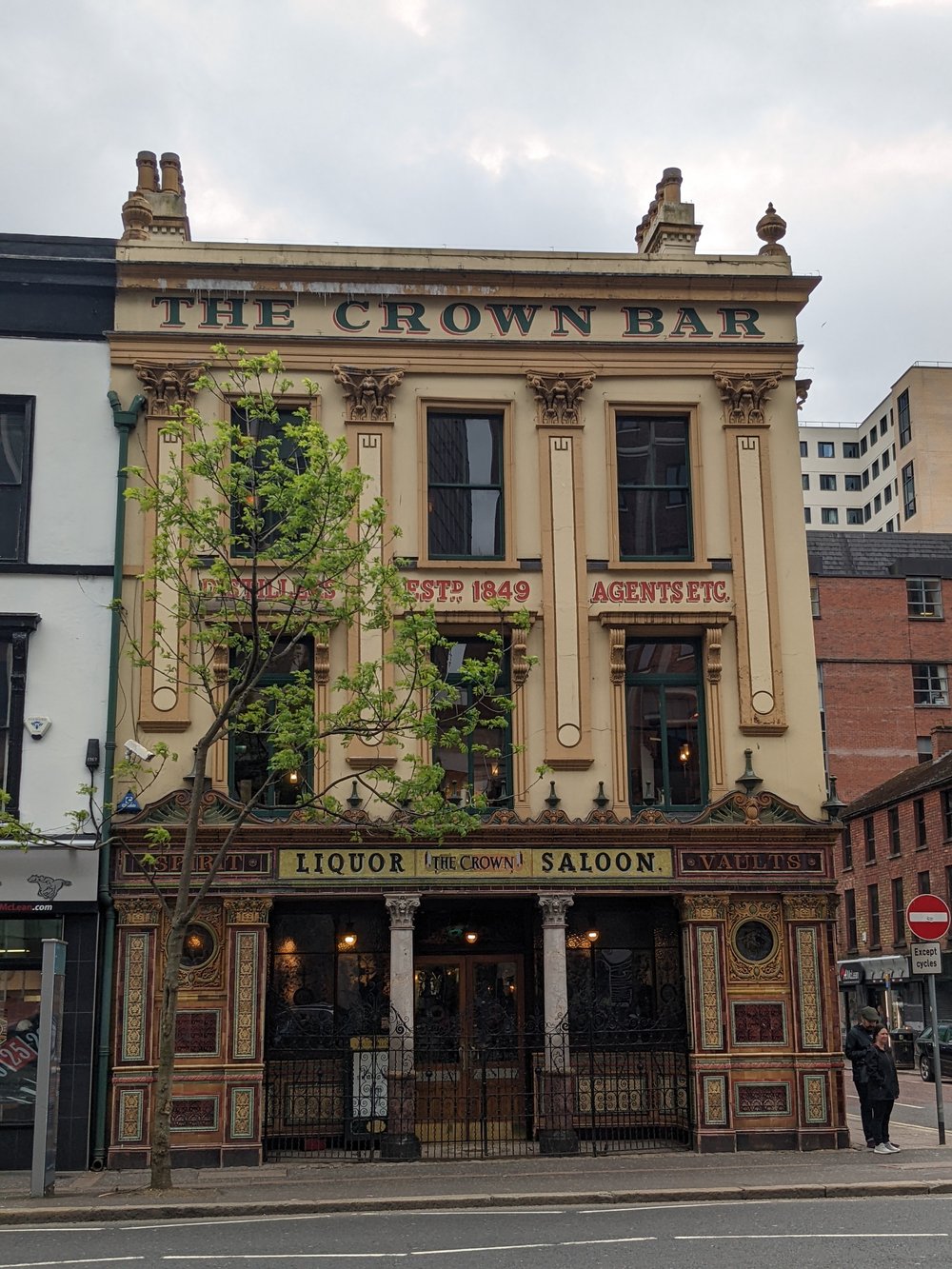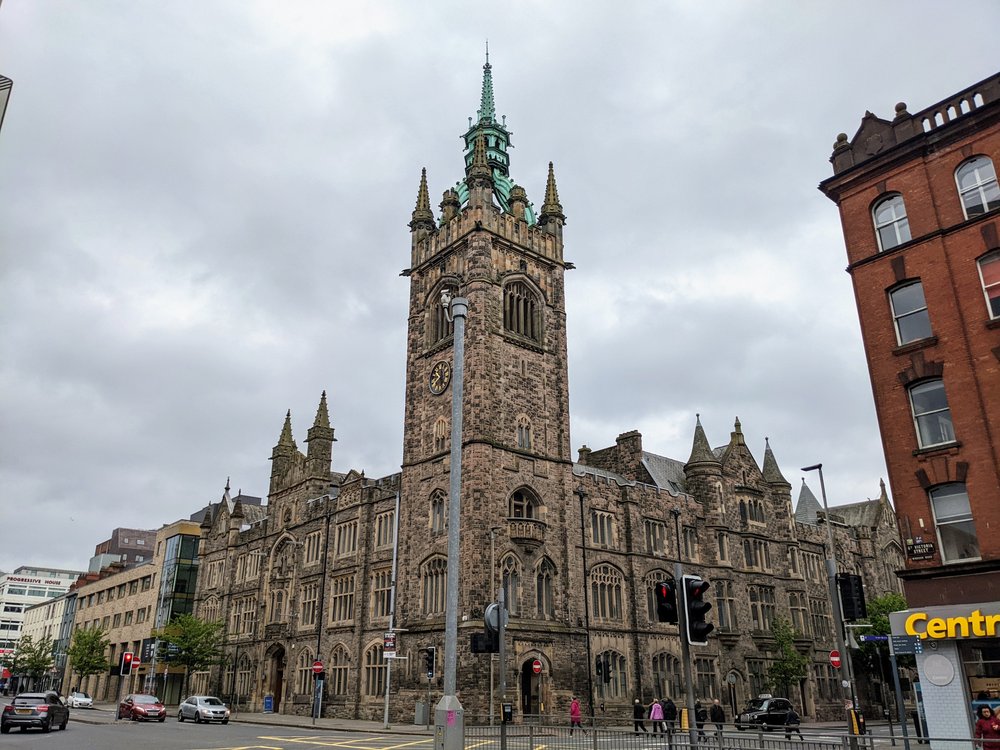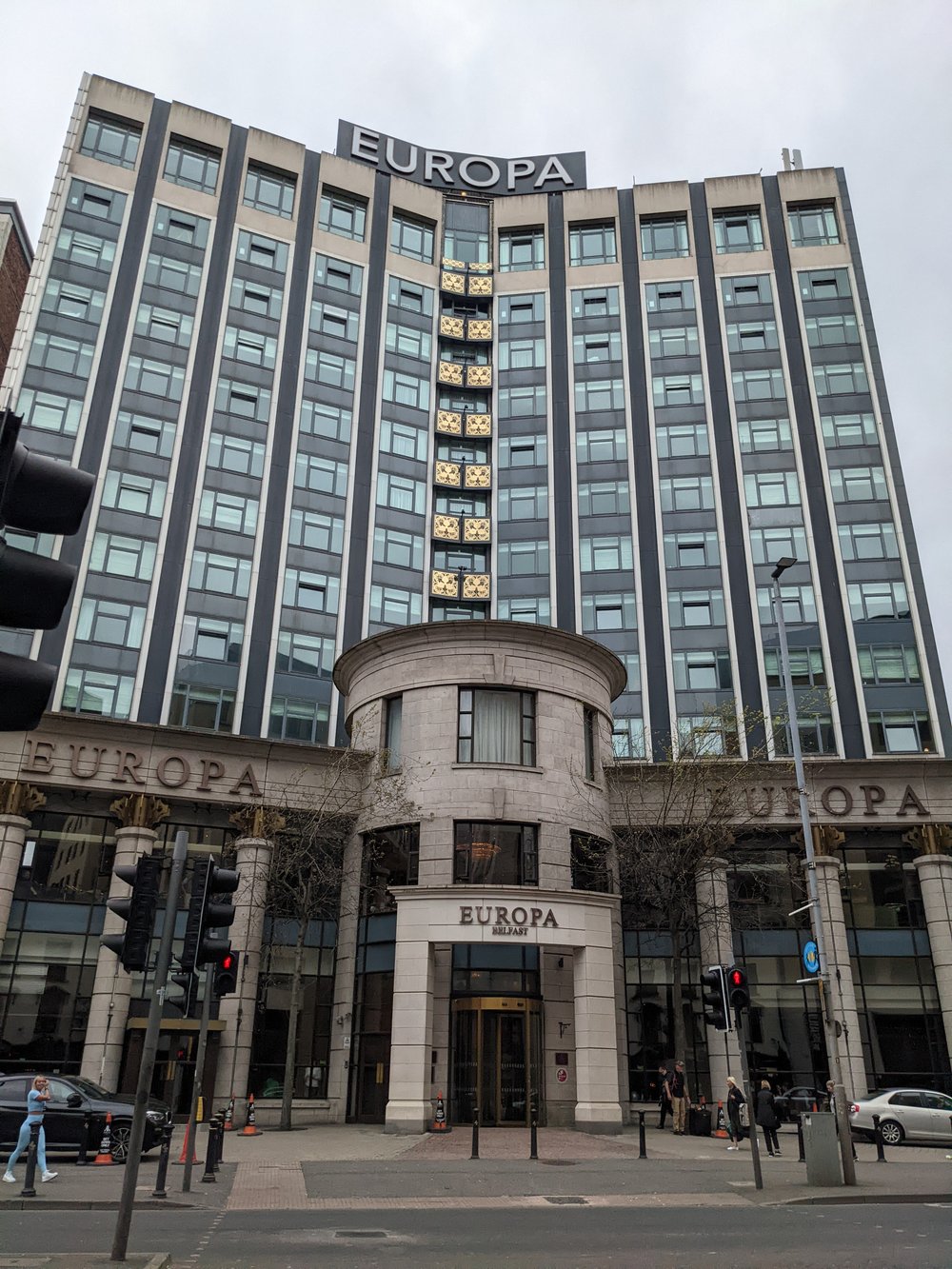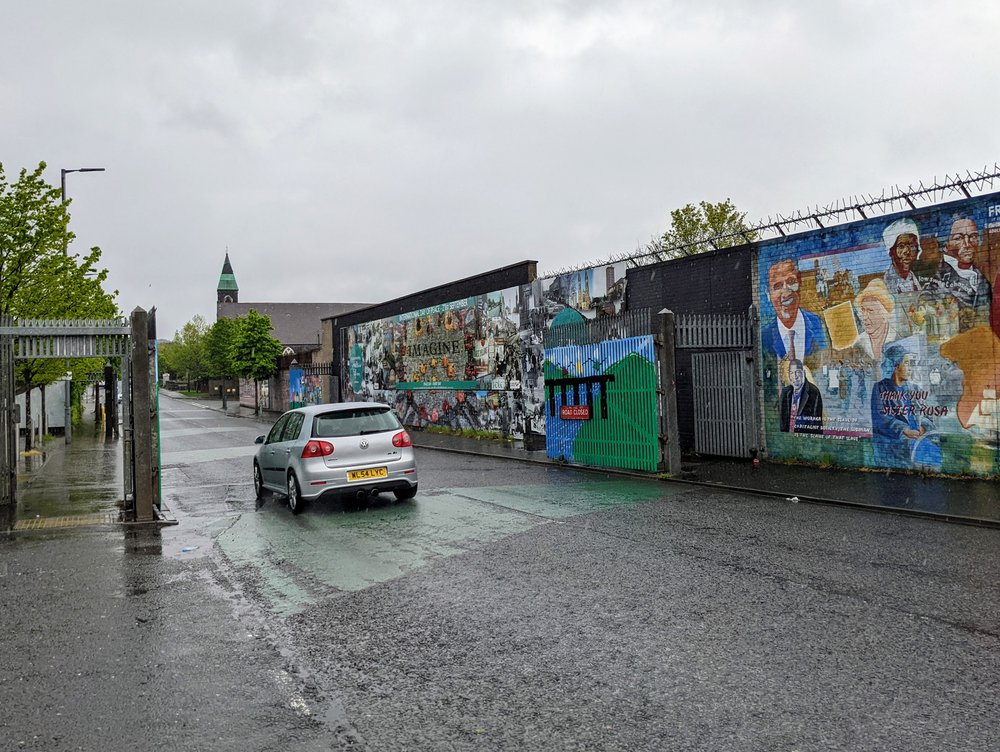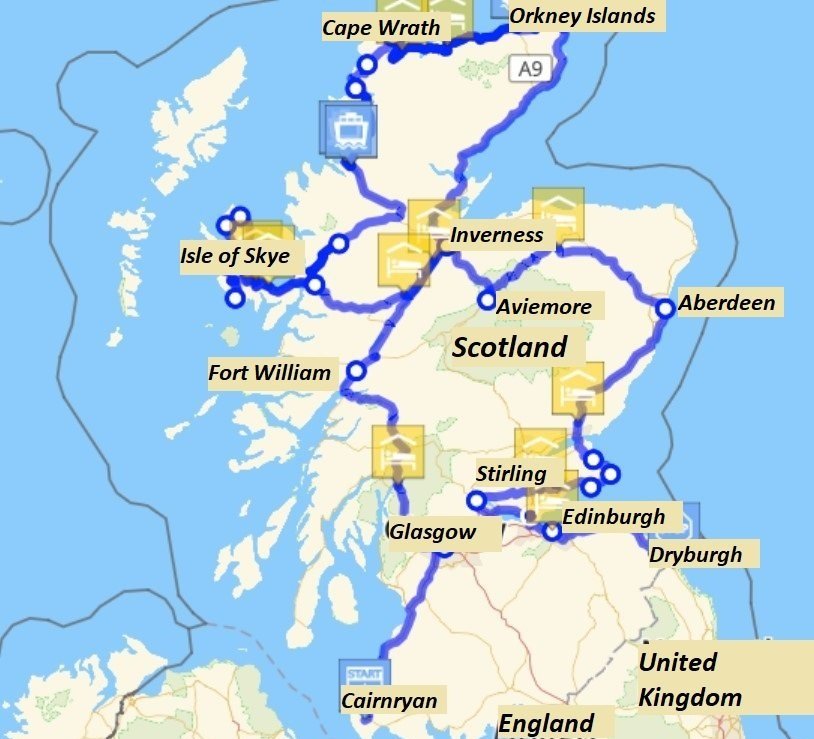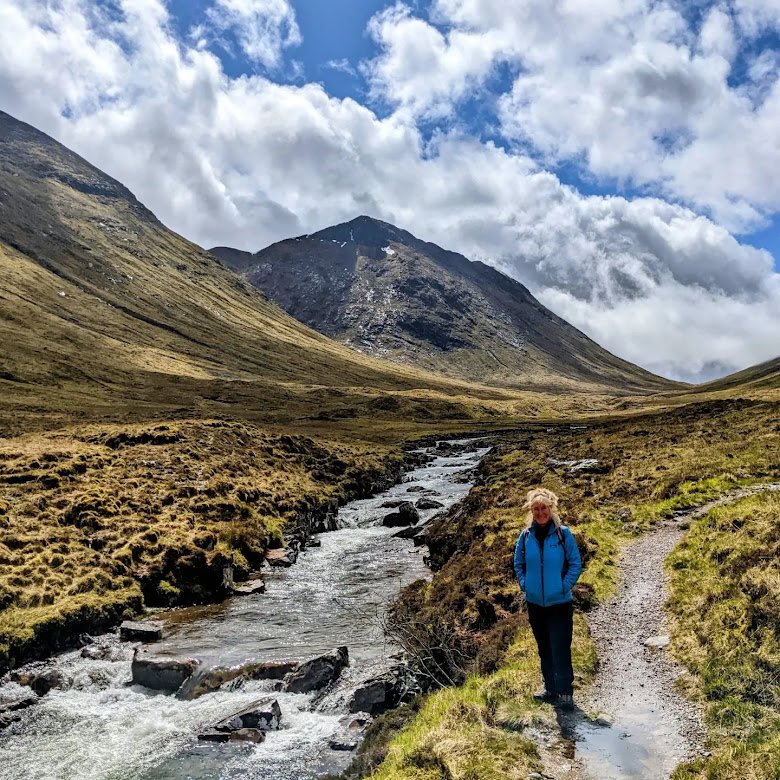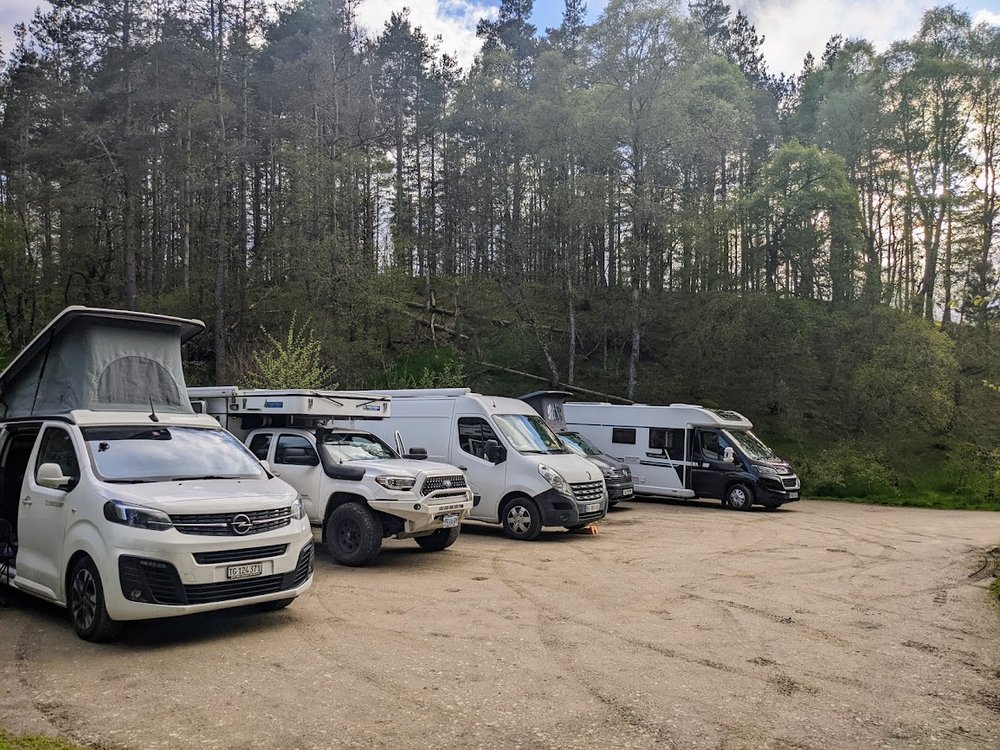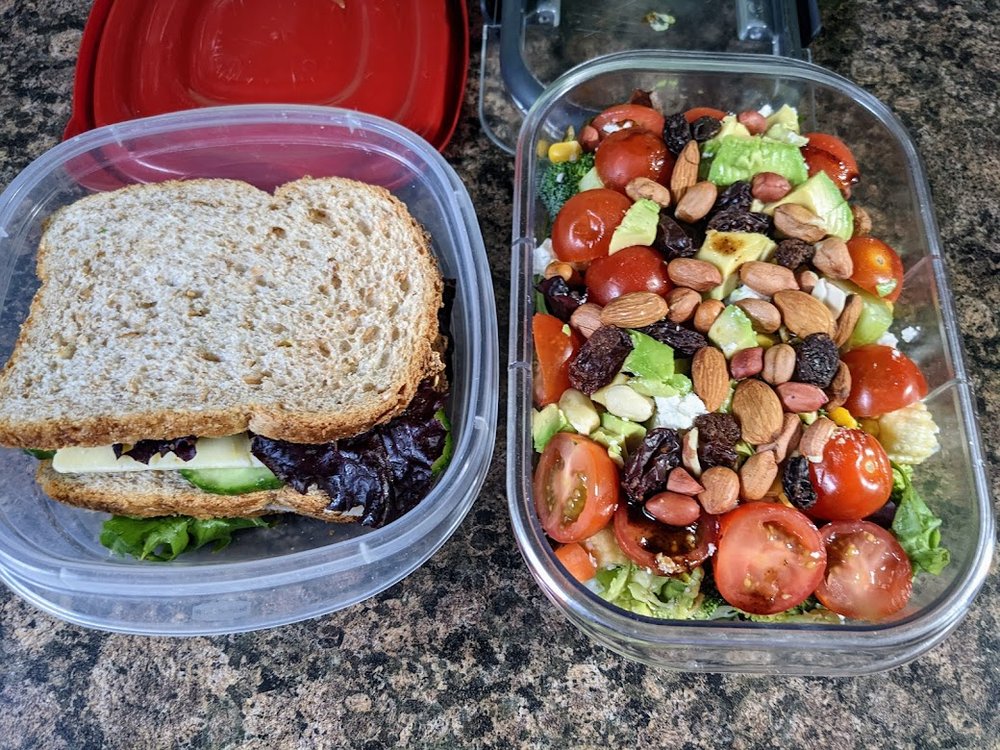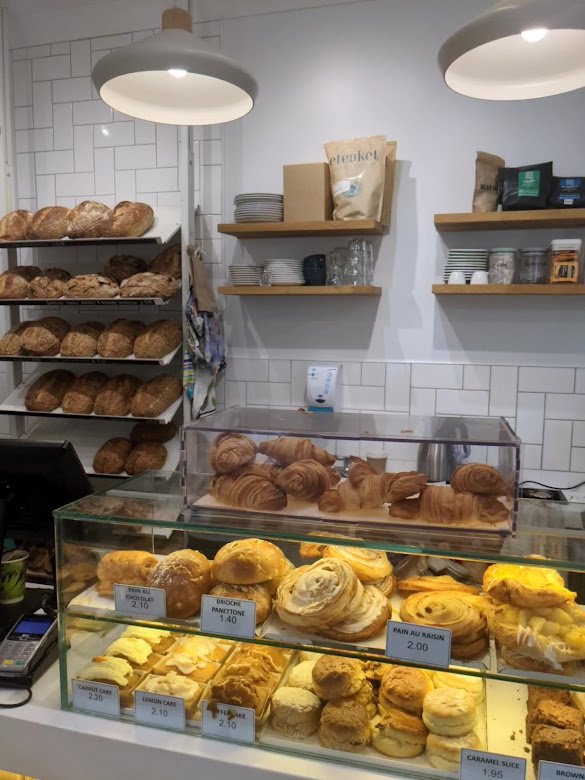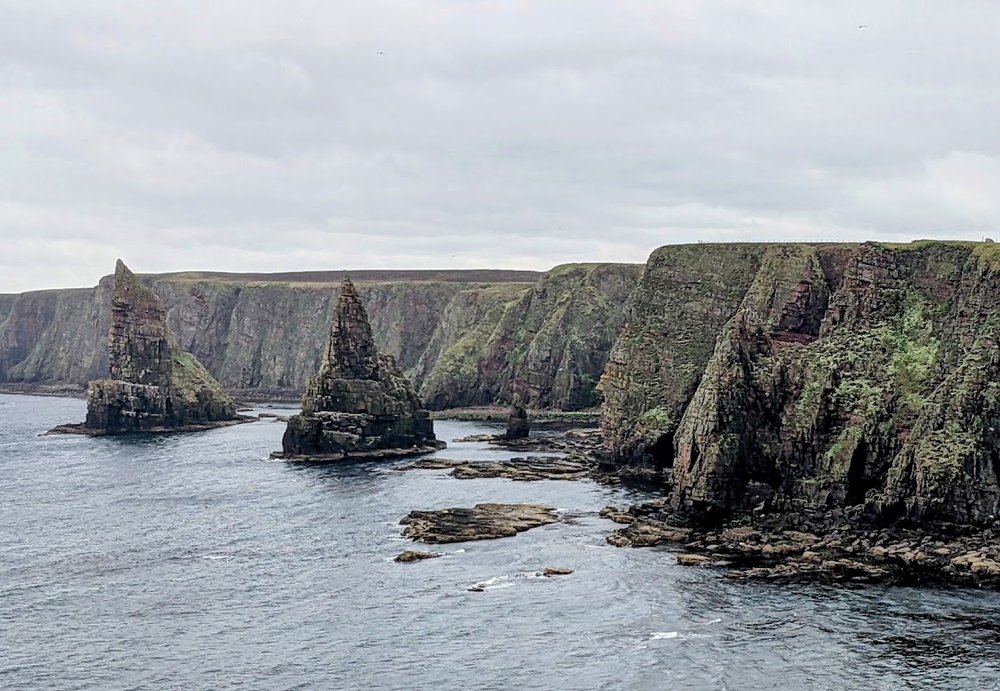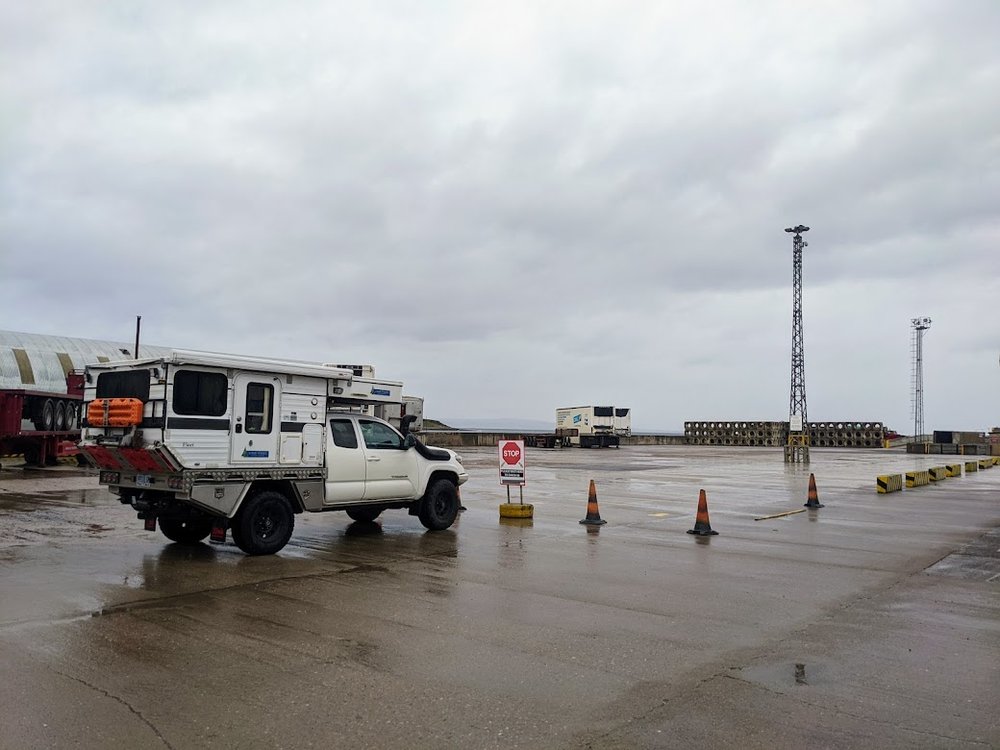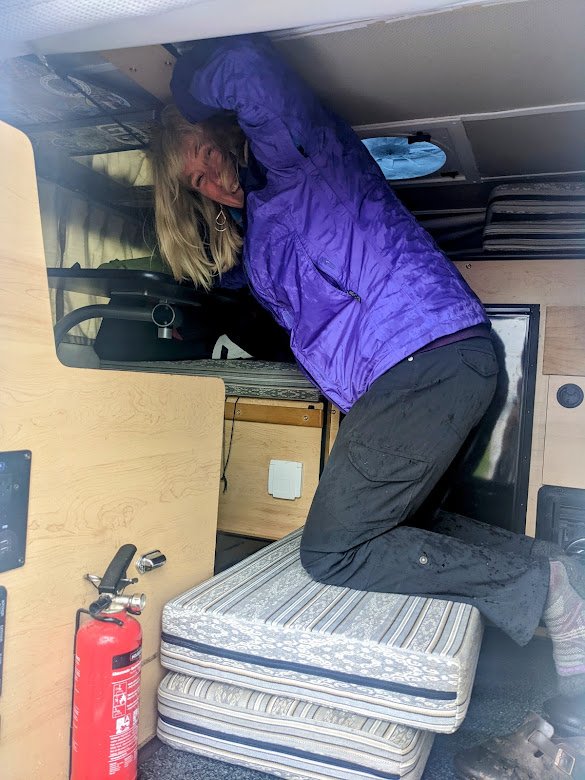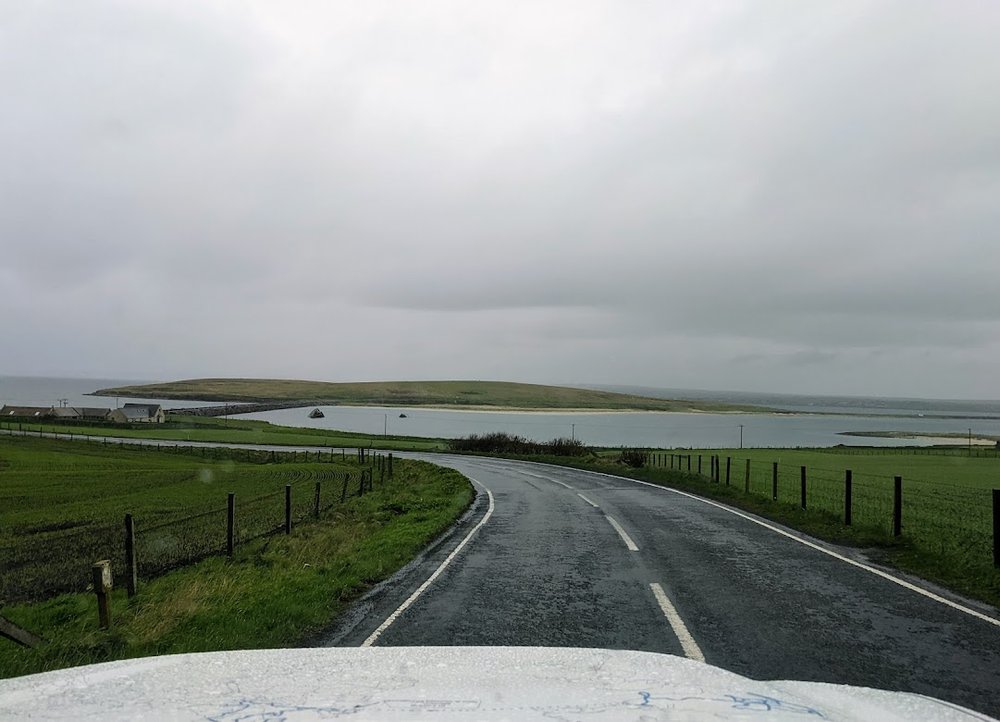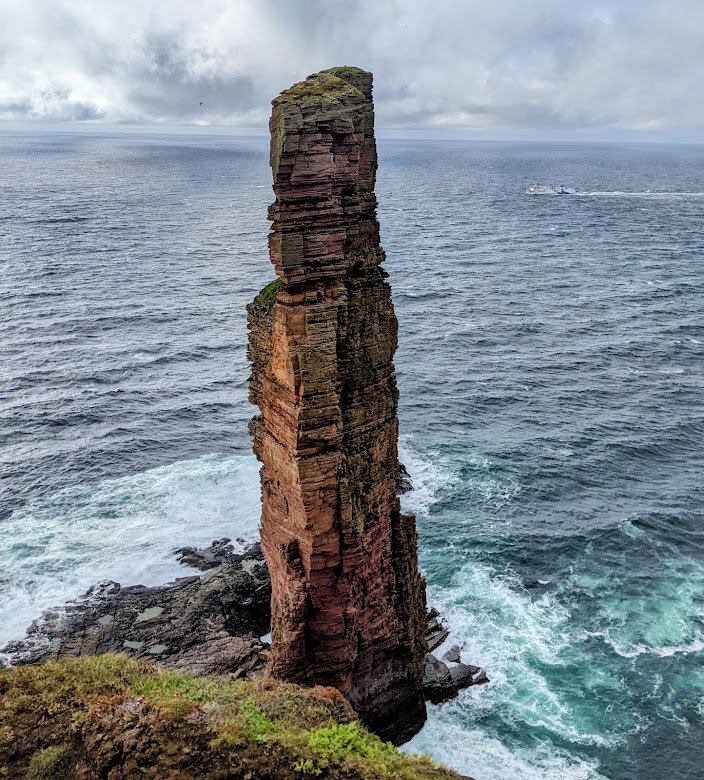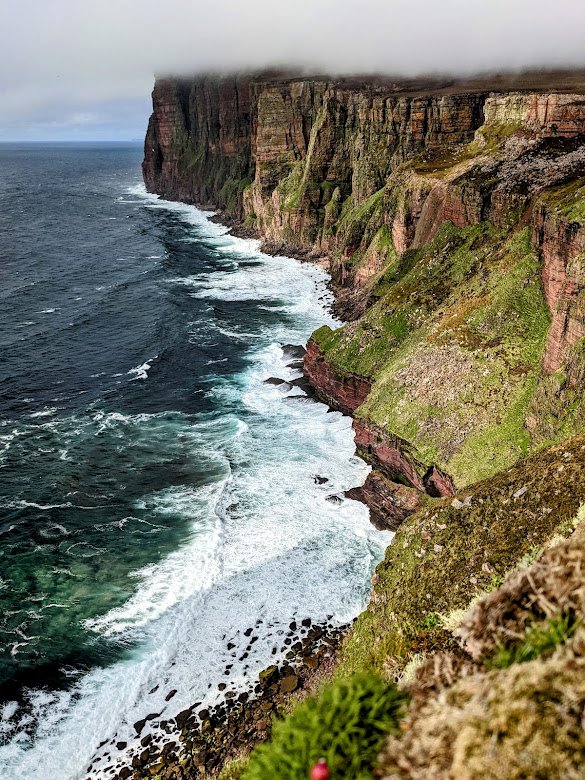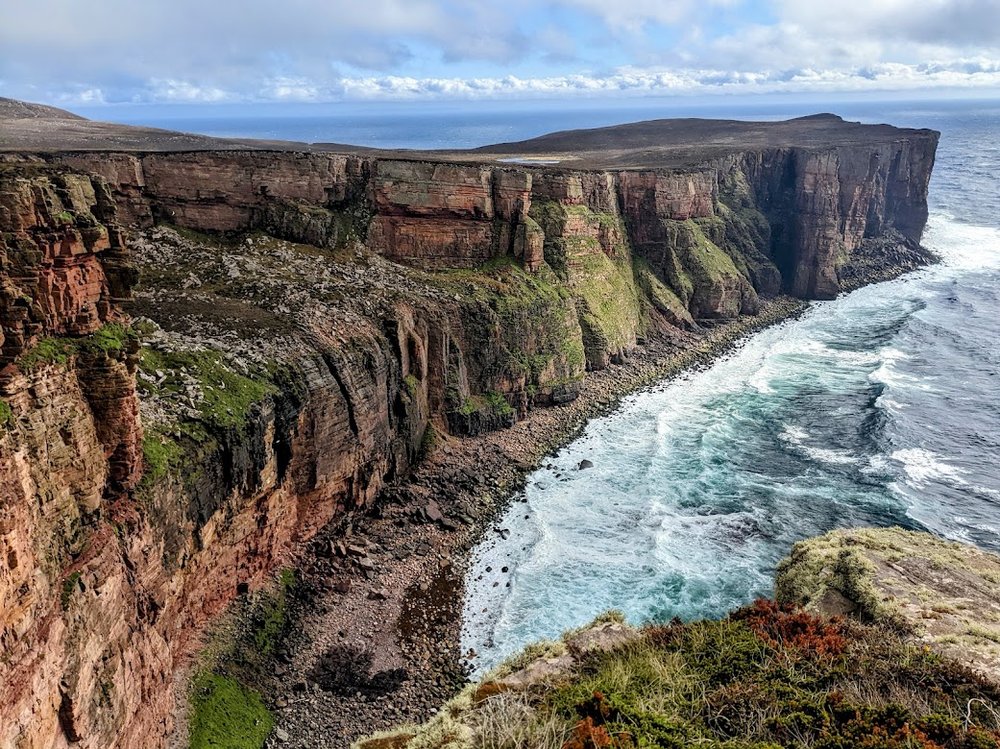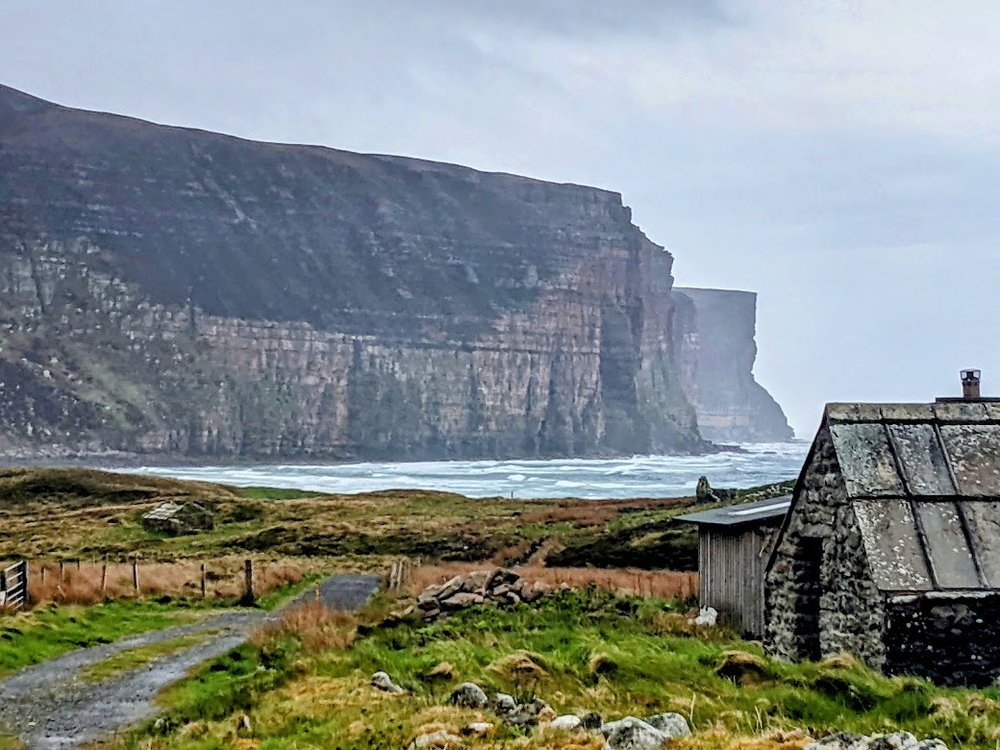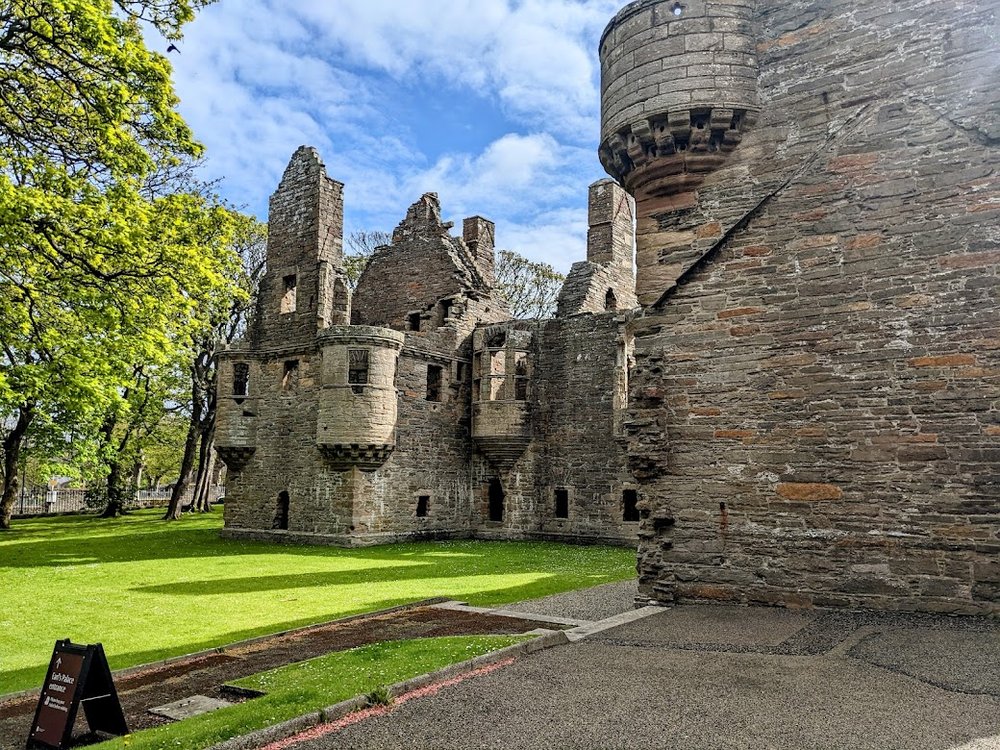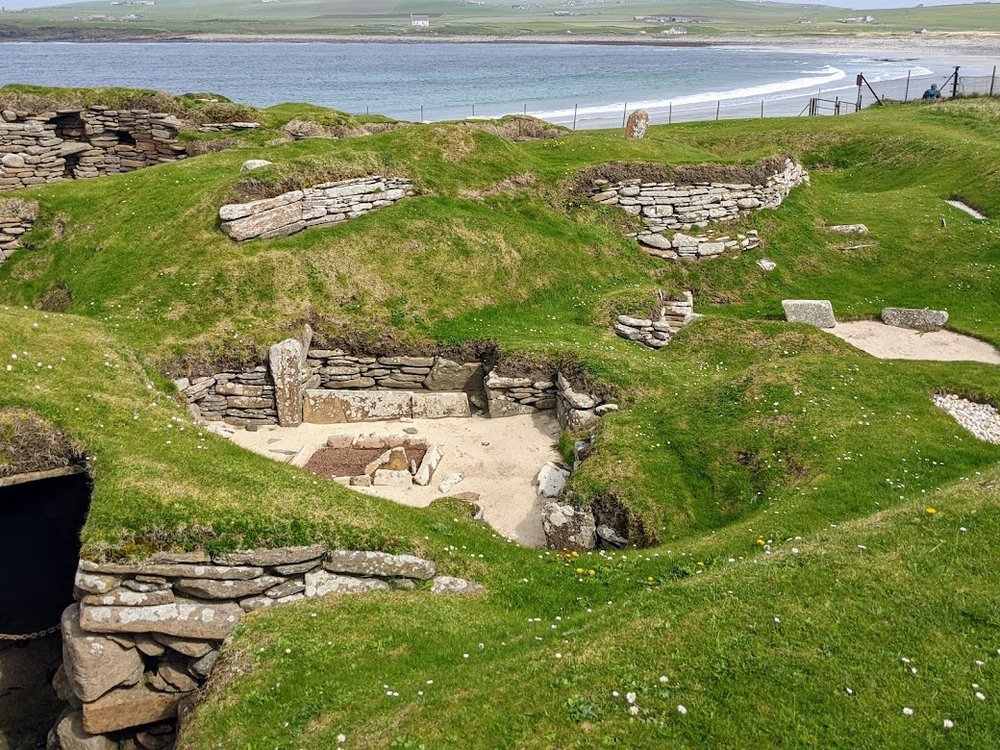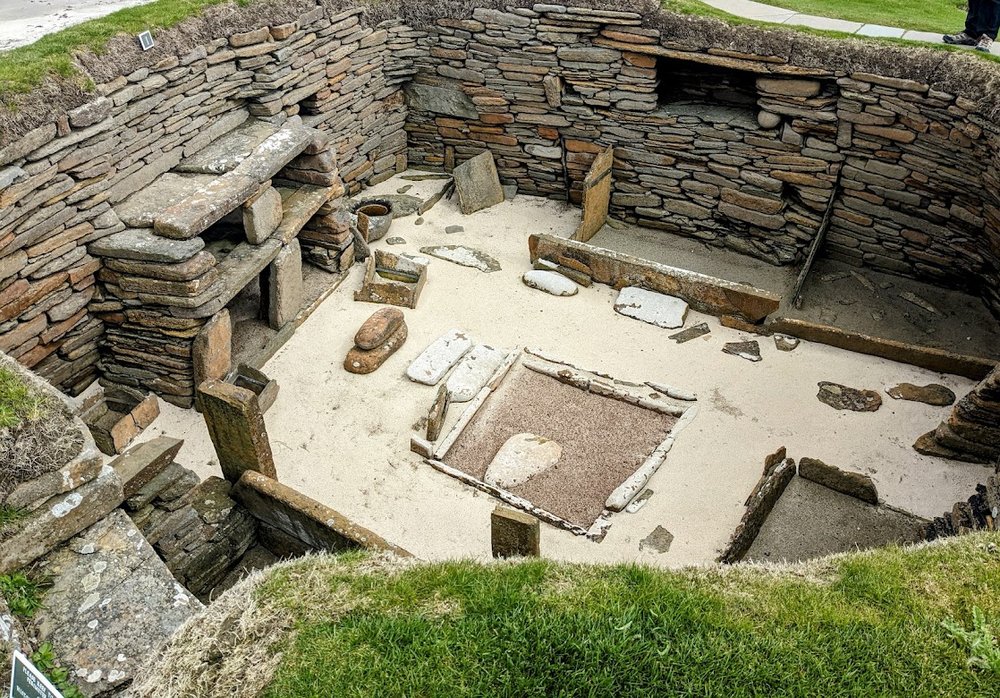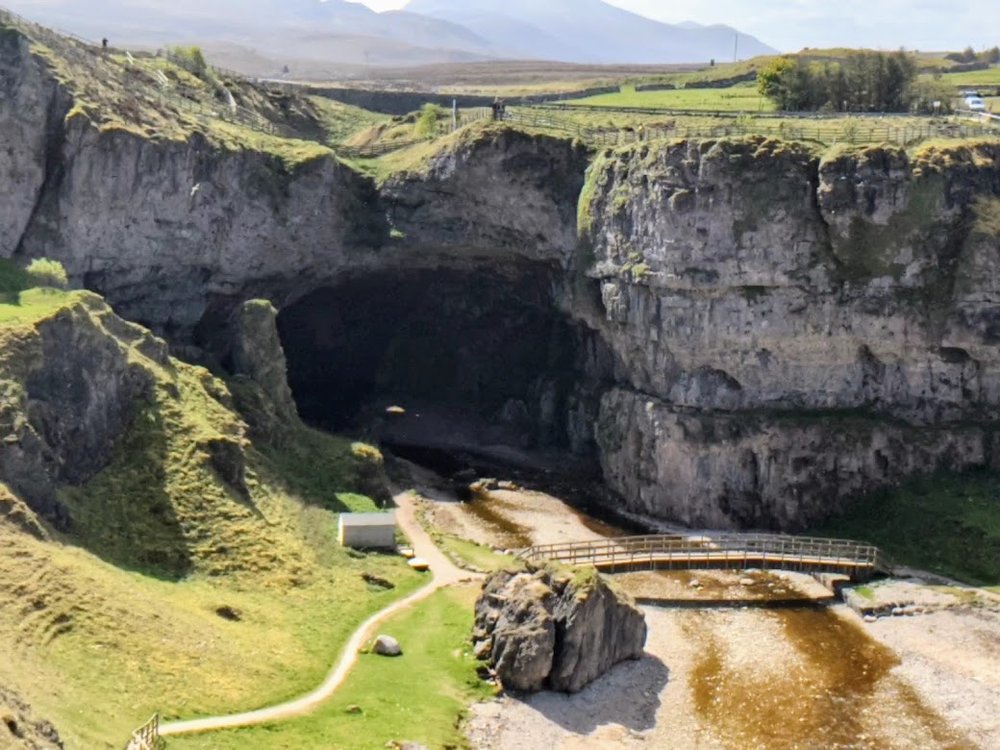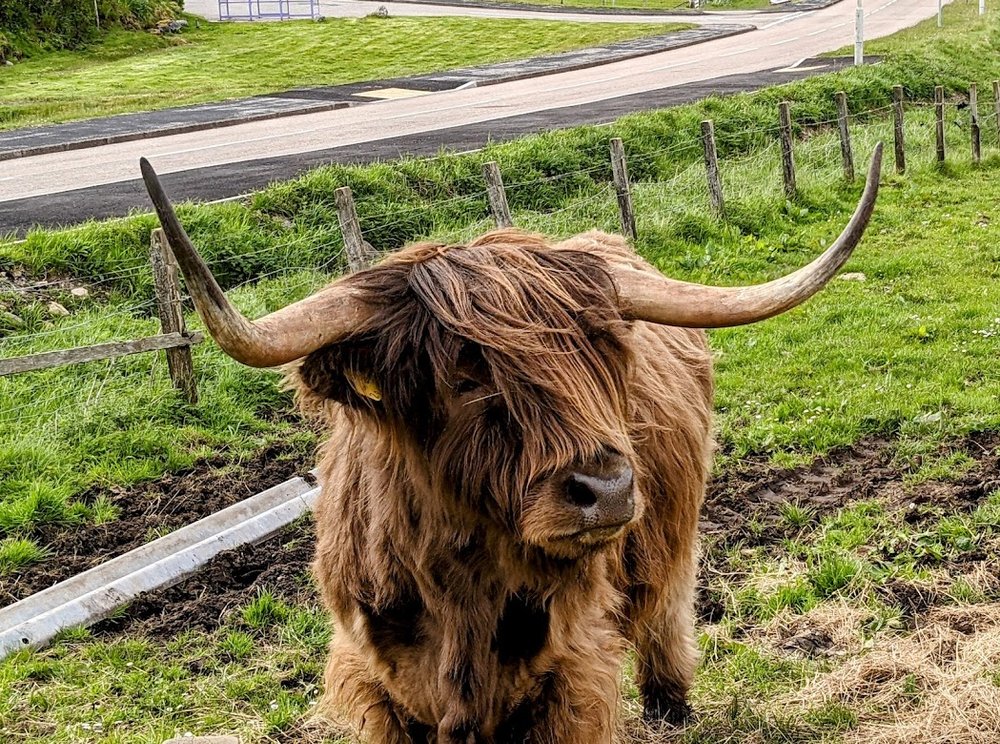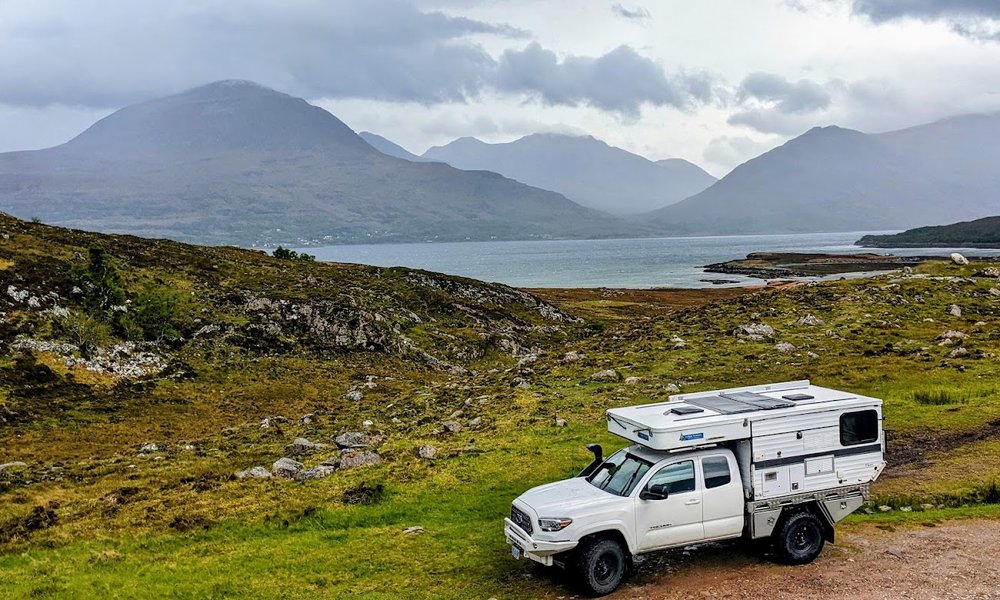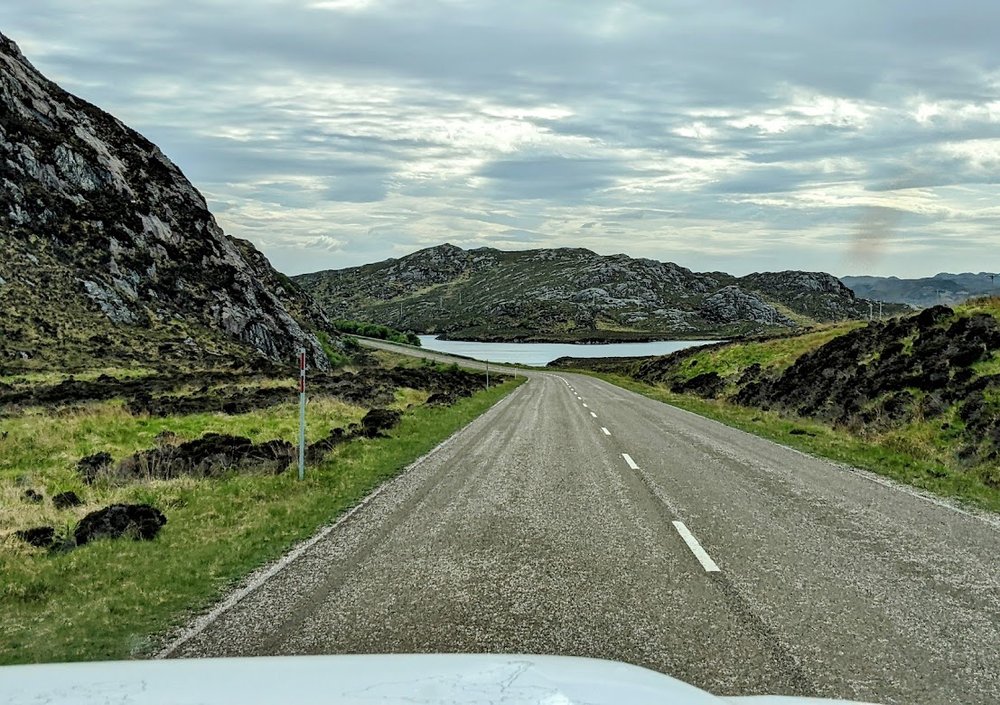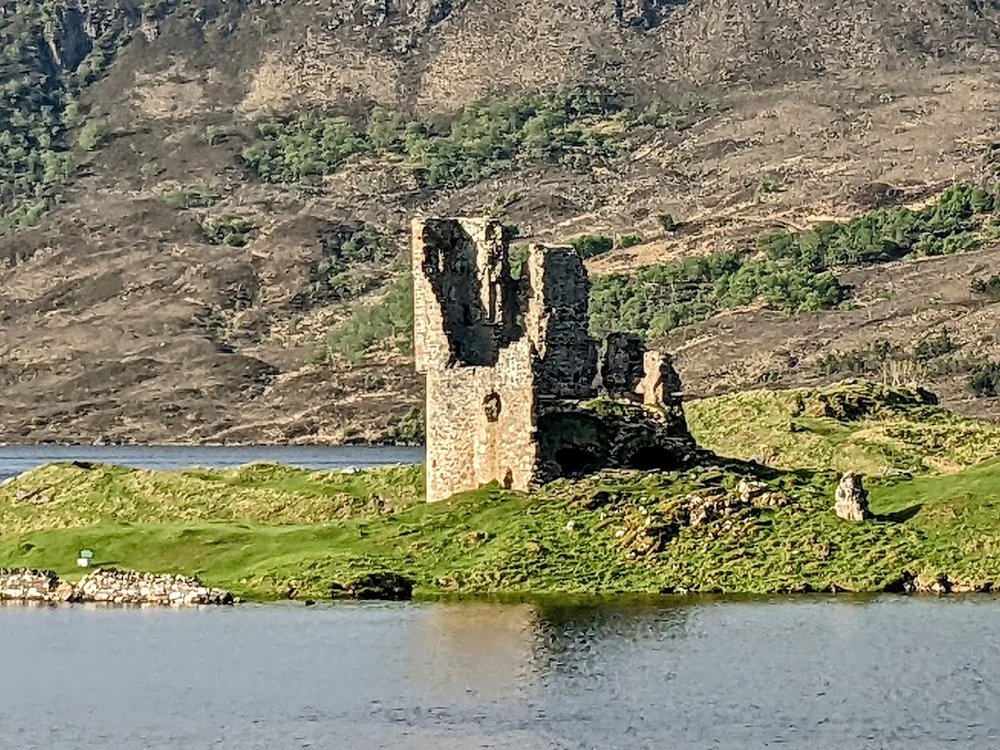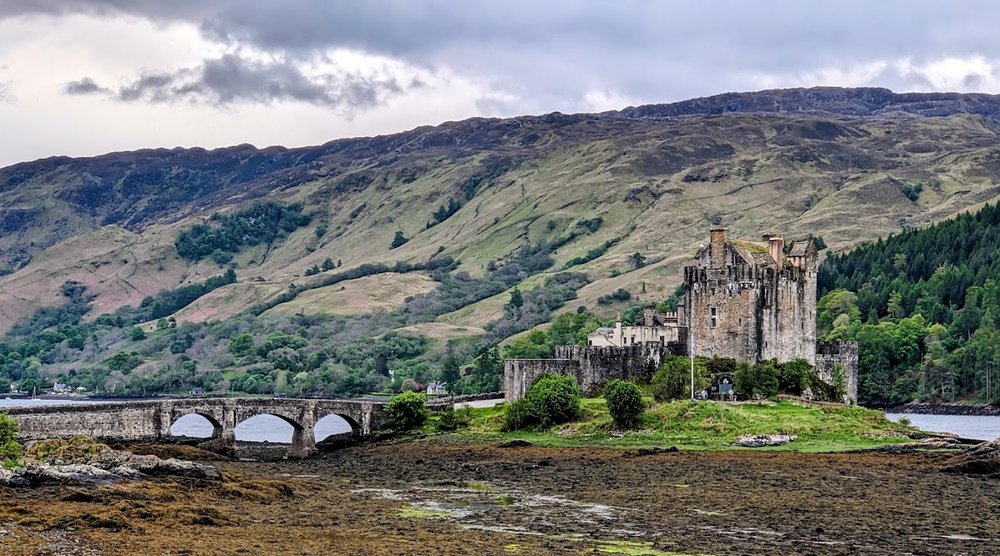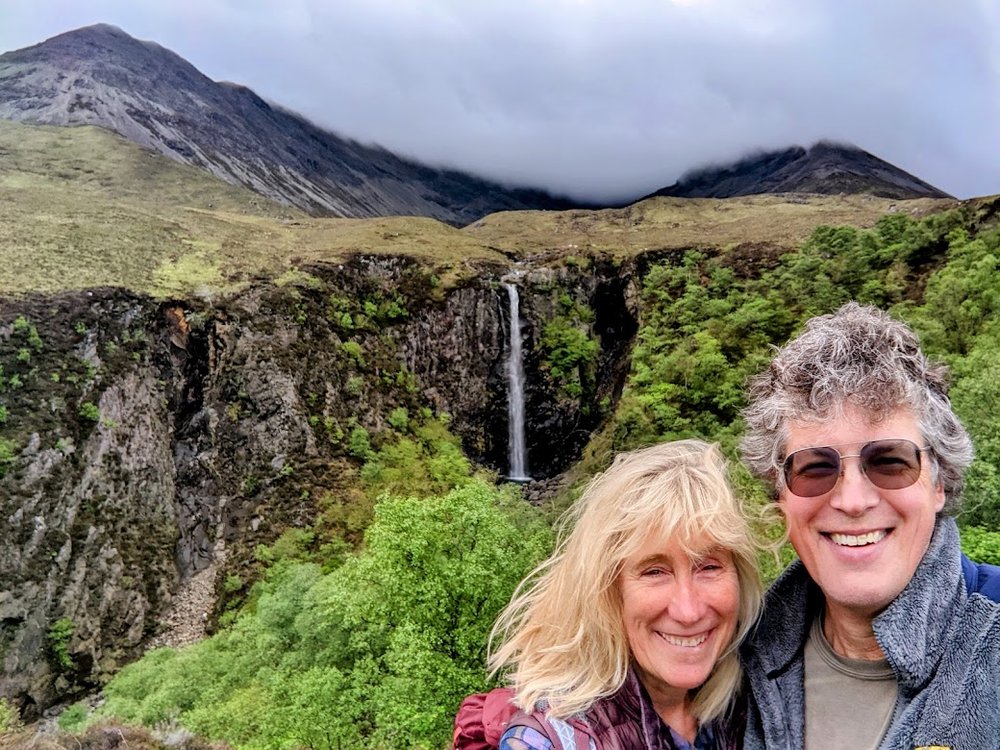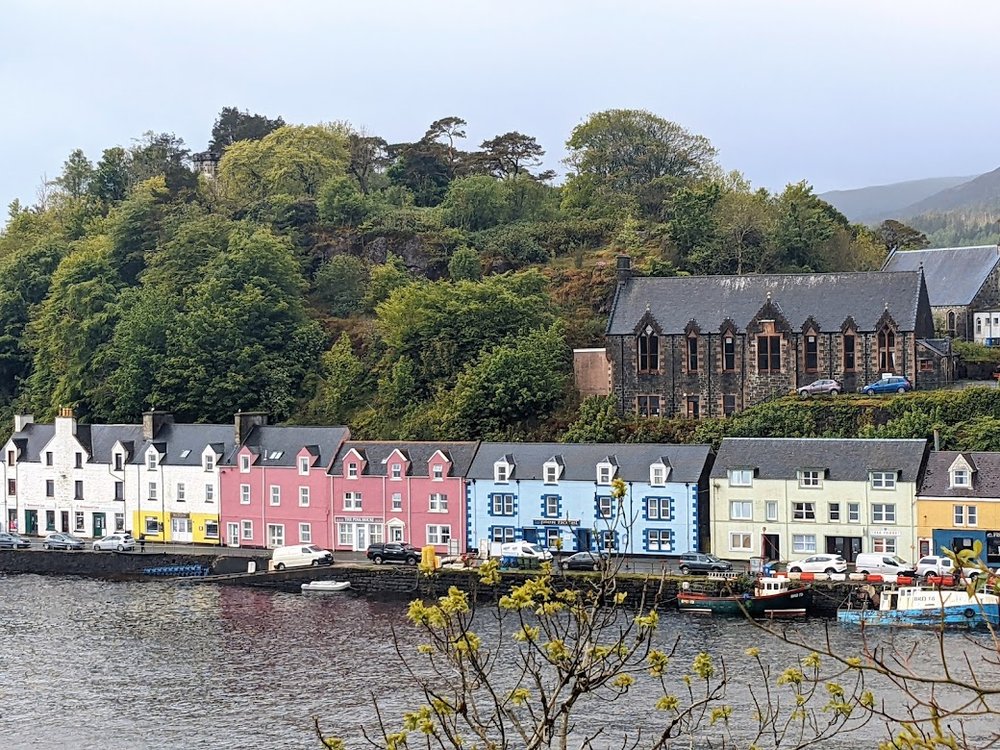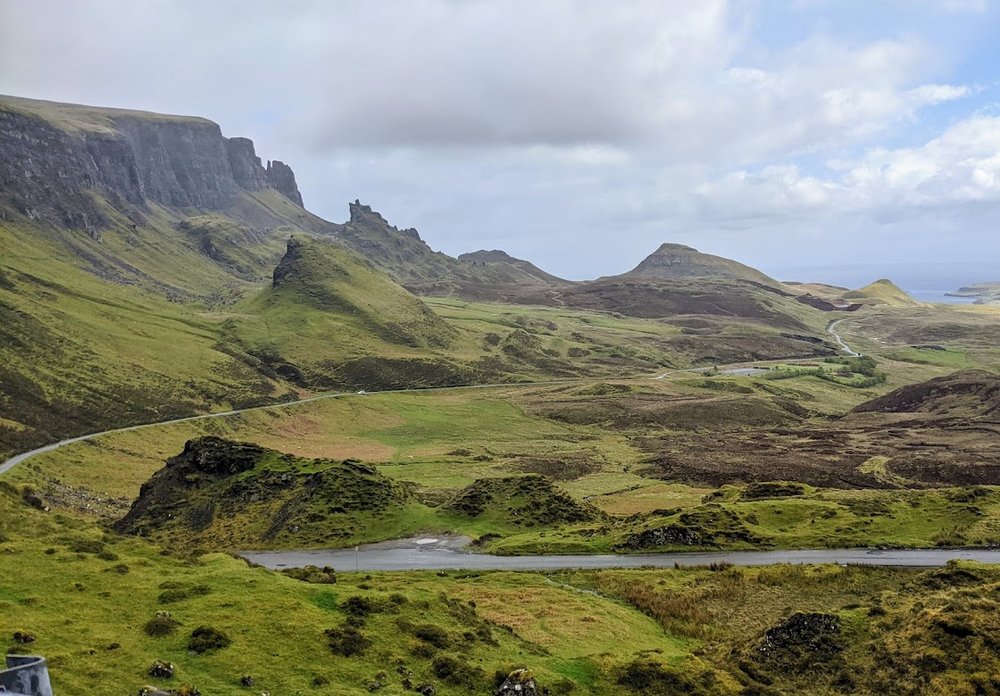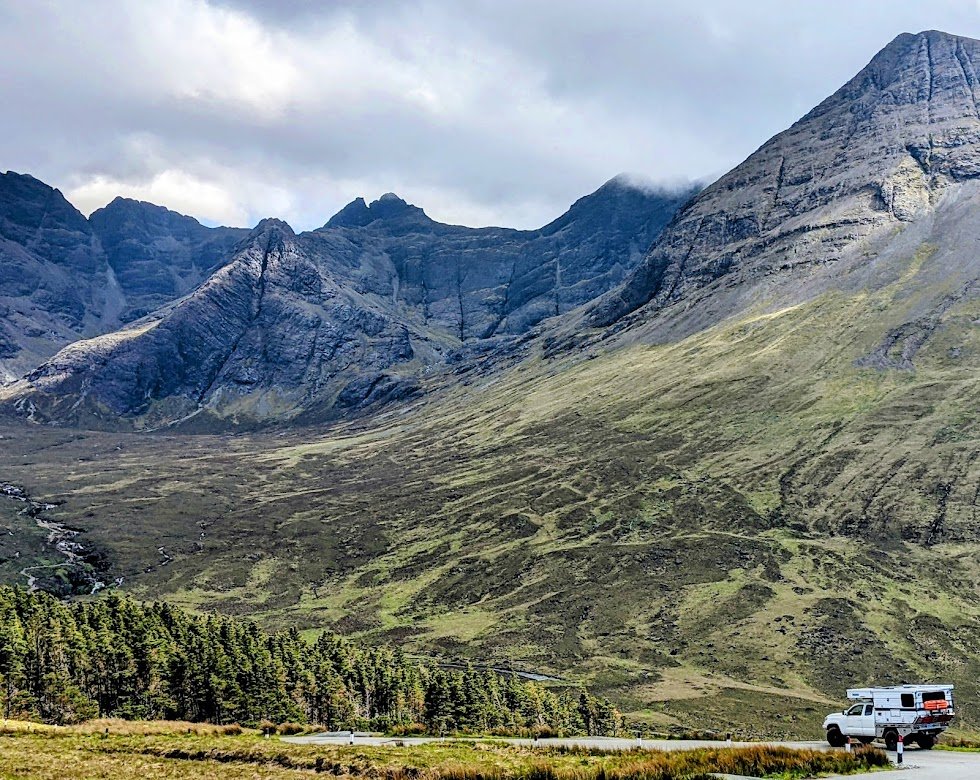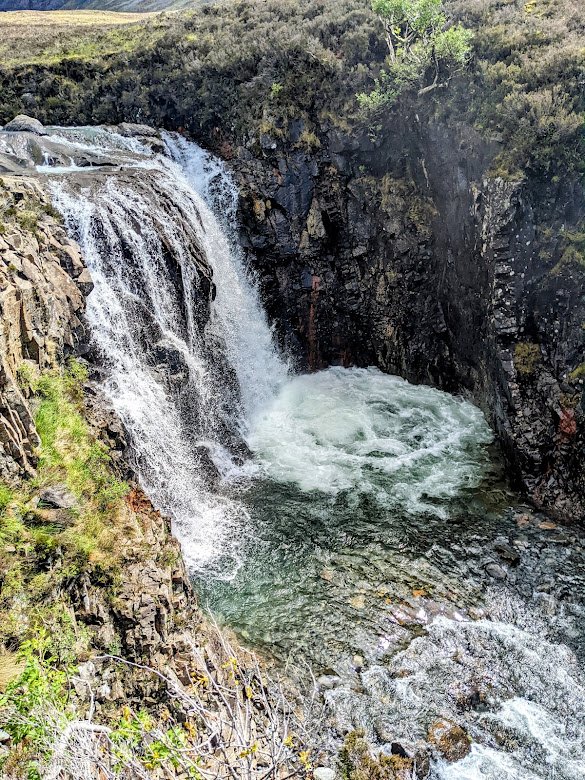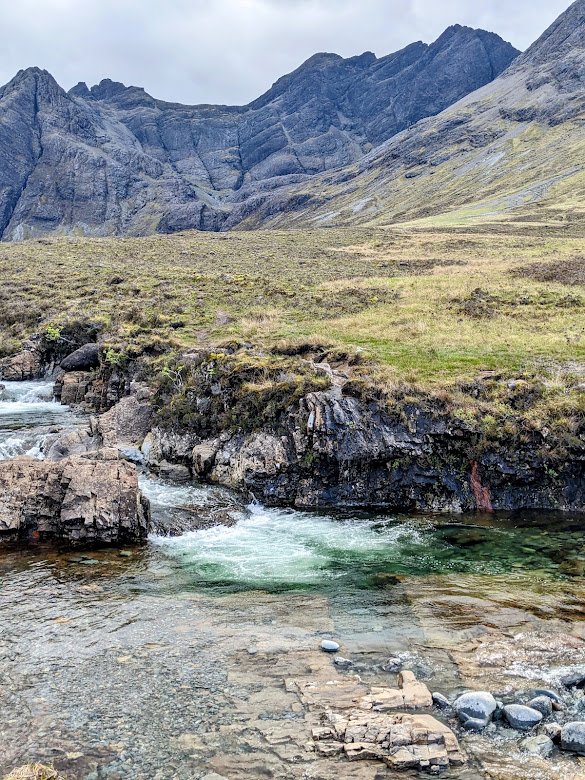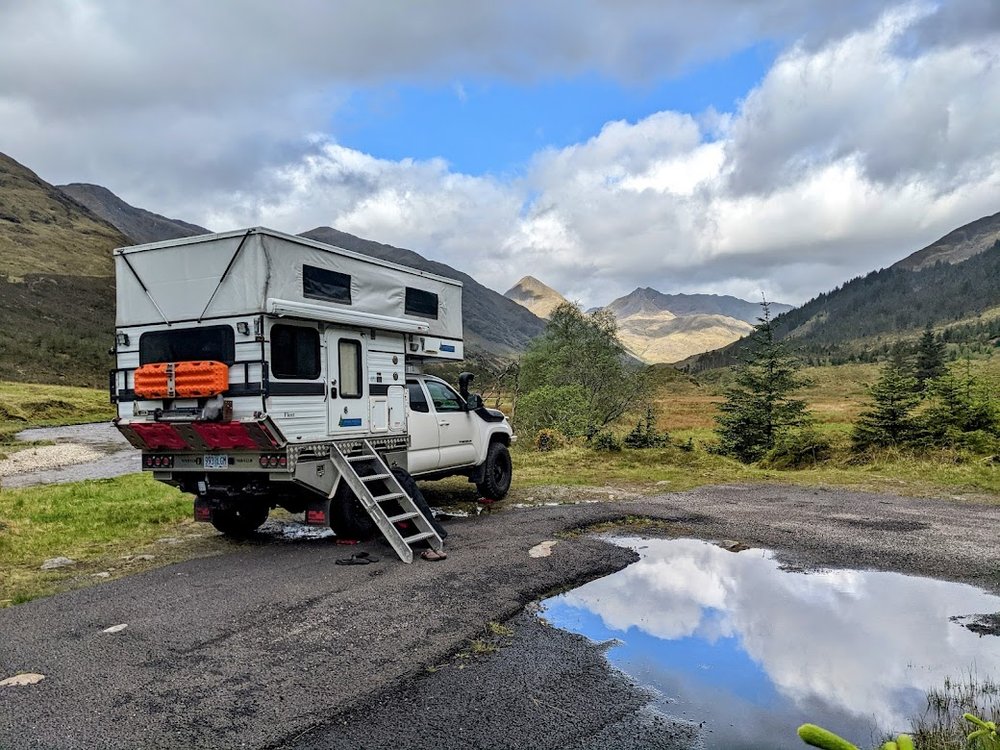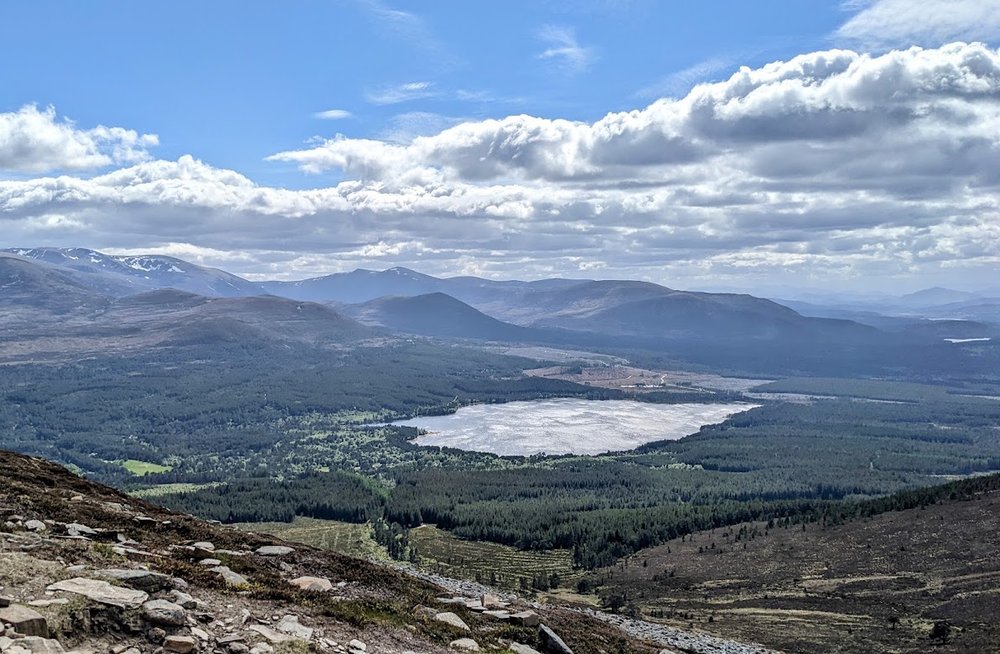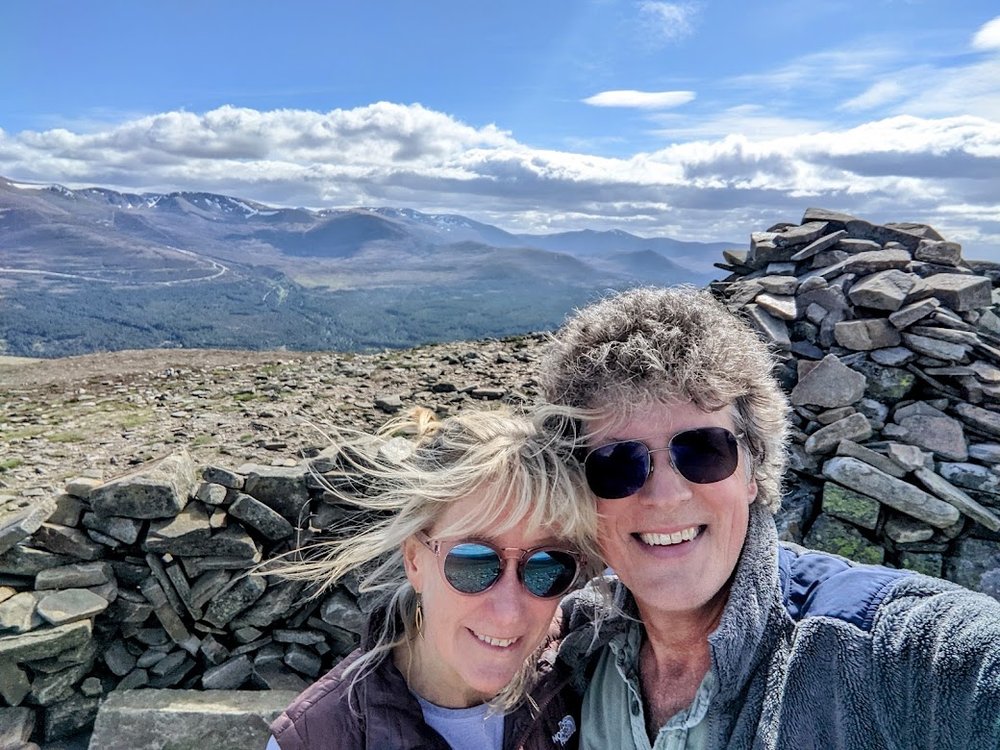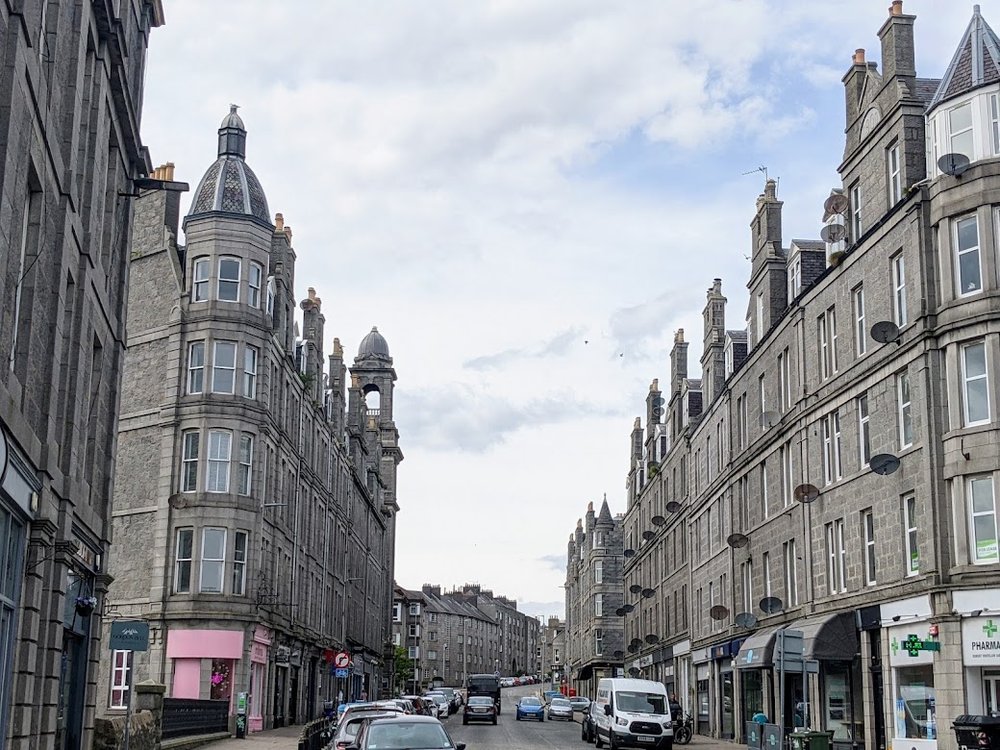Ireland
We landed in The Republic of Ireland on Easter weekend, in the 100th year of the country’s independence. We were instantly steeped in the history of this small but storied land. Despite centuries of struggle for political and religious independence, enduring the rages of Oliver Cromwell and famine, losing half of their population as a result, the people of Ireland were some of the most welcoming and cheerful we have encountered.
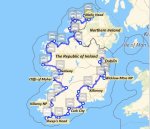 Our 18 day route in Ireland
Our 18 day route in Ireland
We were enchanted by the patchwork of green fields lined by hedges and stone fences, rugged coastlines, sprinkled with elegantly crumbling medieval abbeys, priories and castles. The villages are brightly painted with a variety of hues (we were told this was to combat the Irish grey weather.) We were pleasantly surprised by the additional bonus of mountainous inland passes, windswept moors with the gorse in bloom and the vast limestone swaths of the Burren which added variety and interest. Maybe we were blessed with luck but during our three weeks we were granted many a sunny day and very little rain. It was hard for us to see why the early Romans spurned settling the island, dubbing it “Hibernia,” or eternal winter.
On our first day our ferry arrived in the early evening, so we opted to stay in a campground (it was also laundry time). Camac Valley Camping is not usually our style - big developed grass parking lot for caravans, but it was convenient - a 30 minute direct bus ride to the city center, and the tourist bus stopped right at campground registration so it couldn’t have been any easier.
Visiting Dublin on the anniversary of the 1916 Easter uprising, the city was alive with celebration. Here the presidential motorcade passes us. Our walking tour guide quoted Yeats, who said on that day “a terrible beauty is born.” On this day the final phase of fighting with the British began again, finally resulting in the establishment of an independent Republic of Ireland in 1922.
Of course we took advantage of the Dublin free walking tour to get grounded in Irish history - troubled and bloody. We had not been aware that the Vikings moved in and settled Dublin in the 700’s. They were followed by the Normans from England and Wales in the 12th century who pushed the Danes out and took over, parceling out land to loyal Anglo Normans and beginning centuries of oppressive rule. Apparently the Irish were moved out into the wildlands which became known as “beyond the pale,” where the pale Irish were banished. So much to learn. We walked the scenes of the 1916 Easter uprising, hearing the tales of some of Ireland’s revolutionary heroes, including the iconic Michael Collins.
With both of our relatives harkening back to England, we were much better versed in English history and it was good to get more perspective. Here follows our over-simplified takeaways: following the establishment by Henry VIII of the Church of England (because Rome would not allow him to divorce his wife), and the ensuing civil war in England, relations between the Roman Catholic Irish and their British conquerors went south quickly, especially with the arrival of Oliver Cromwell. On behalf of the Commonwealth of England (which had just executed Charles I and replaced the monarchy with parliamentary rule), Cromwell arrived in Ireland in 1649 to take control. He is reputed to have killed about a third of the population in the process. Almost every historic abbey, monastery, castle and walled town has a tragic story to tell in relation to Oliver Cromwell, Ireland’s most infamous historic villain.
 Our Dublin pub of choice, the beautiful old Long Hall (reputedly Bruce Springsteen’s favorite, so how could you go wrong?)
Our Dublin pub of choice, the beautiful old Long Hall (reputedly Bruce Springsteen’s favorite, so how could you go wrong?)
Then we made our way to Brú na Bóinne, site of stone age passage tombs. Visits are controlled, you start at the visitor center and are bussed to the two tomb sites, Knowth and Newgrange. The sense of history of humankind is staggering, people struggling to eke out a living yet still capable of incredible ingenuity and creating beauty, treating the dead with respect and dignity. A man can die but once.
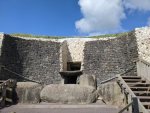 Entrance to Newgrange passage tomb. 5,000 years old it pre-dates both Stonehenge and the Egyptian pyramids
Entrance to Newgrange passage tomb. 5,000 years old it pre-dates both Stonehenge and the Egyptian pyramids
Incredibly, Newgrange is designed so that on the morning of the winter solstice, the sun enters the entrance and lights up the whole interior burial chamber. We were able to walk inside and see the original structure and the amazing roof, still in tact and waterproof! But no inside pictures allowed.
Leaving the Boyne valley, we passed sites for the Battle of the Boyne in 1690. Following Oliver Cromwell’s ravages, 45 years later the endless fight for control in Britain continued and this valley was the site of the resounding victory of Dutch William of Orange over Roman Catholic James I in James’s final bid for the throne. Protestant William of Orange won and the colors orange and green still figure hugely in today’s Northern Ireland politics (orange for Unionists (pro being part of the United Kingdom, mostly Protestant and able to trace roots back to Britain, green for Nationalists, mostly Catholic and pro Ireland being a one-island country without any British rule).
 Our first real hike in Ireland, Dawn learns the treachery of hiking on bog land. Bright green moss is not solid ground. Full leg immersion
Our first real hike in Ireland, Dawn learns the treachery of hiking on bog land. Bright green moss is not solid ground. Full leg immersion
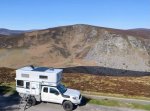 Our overnight spot in the Wicklow Mountains - perched with a lake view
Our overnight spot in the Wicklow Mountains - perched with a lake view
The next day’s hike went much better, starting in the the beautiful Glendalough valley.
T
 Spinc hike out of Glendalough -8.5 mile beautiful hike climbing up the valley
Spinc hike out of Glendalough -8.5 mile beautiful hike climbing up the valley
Next stop on the route (Andy planned this trip around Ireland to include 65 points of interest and 45 driving hours, don’t worry, only giving the highlights here), was Kilkenny. Rooted in medieval history with a lively shopping center, we decided to spend a night and explore the town.
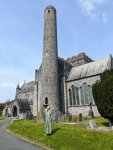 Kilkenny castle & cathedral - with round tower - this became a theme in Ireland
Kilkenny castle & cathedral - with round tower - this became a theme in Ireland
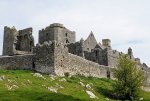
.
Our favorite castle! Rock of Cashel
Steeped in the history of Saint Patrick arriving in Ireland in the 5th century, leading the country’s conversion to Catholicism, the first site of the castle on the hill is magical. The hill itself is supposed to be a rock bit out of a nearby mountain by the the devil then spit out in ire at St. Patrick. The Rock of Cashel rises above the town, the traditional seat of the Irish Kings of Munster prior to the Norman arrival in the 12th century
Speaking to Overlanders about what to see and do in Ireland, The Wild Atlantic Way always comes up as a must. This 2,500 km route winding its way along every peninsula and inlet of the western Atlantic coast is a commitment to incredible scenery and slow driving days. We did much of it, but not every bit. We came in and out of the route to see inland areas, and sometimes took a short cut. We have been continuing our commitment to walking at least 5 miles a day and trying to keep driving time to well under three hours daily (ideally 1-2).
Then, our last big city in Ireland. Galway was fantastic, teaming with life, street musicians, colorful art, the Saturday market, and pedestrian shopping streets. One young Irish woman we talked to said that Dublin was the old and serious city, Cork was middle aged (she thought of it as people in their 30’s) and Galway was the young thriving place mostly populated by people in their 20’s. The city felt happy and upbeat, the only downside was our camping spot - 24 hour parking at the port. Not beautiful but highly convenient for a rare and welcome night out having dinner at a pub.
The stunning Cliffs of Moher - walked the edge for hours - who says it rains all the time in Ireland?
Time to leave the Republic of Ireland and make our way to Northern Ireland. Saying goodbye to a beautiful country with more scenic diversity than we ever expected. (We were a little afraid of days on end of green fields and sheep, not at all!). Grateful for our time here, thank you for reading!


























